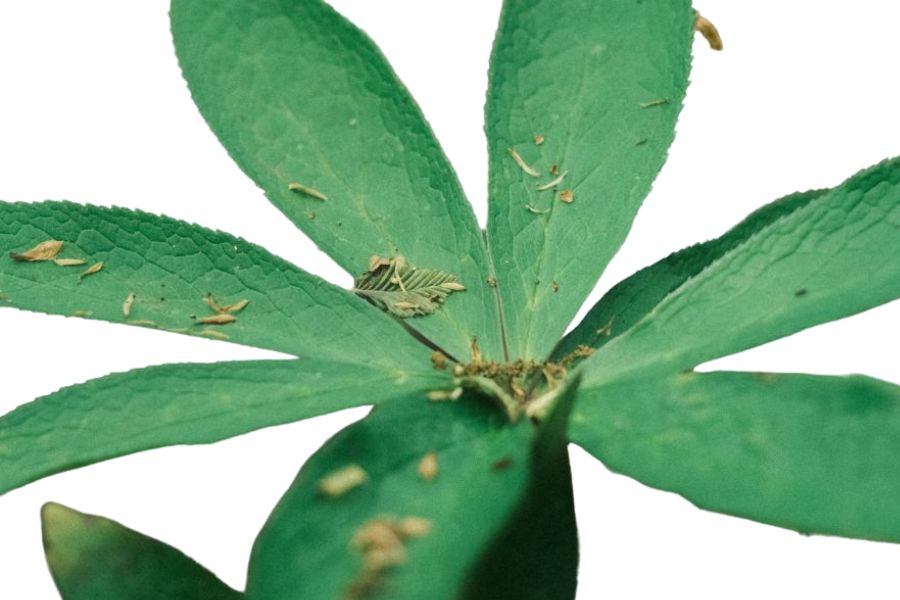Vermont offers many natural foods that grow wild across its forests, fields, and wetlands. Learning about these edible plants can add new flavors to your meals. It also connects you to the land in a meaningful way.
Foraging for wild foods creates a direct link to the traditional ways people once fed themselves. Native Americans and early settlers relied on these plants for survival. Today, we can enjoy them as special treats and nutritional additions to our diets.
Spring brings tender greens like dandelions and ramps poking through the forest floor. Summer delivers juicy berries along woodland edges and meadows. Fall rewards patient foragers with nuts and fruits that sustain wildlife and humans alike.
Knowing what plants are safe requires careful study and attention to detail. Some edible plants have dangerous lookalikes that could make you sick. Good identification skills will keep your foraging adventures both fun and safe.
What We Cover In This Article:
- The Edible Plants Found in the State
- Toxic Plants That Look Like Edible Plants
- How to Get the Best Results Foraging
- Where to Find Forageables in the State
- Peak Foraging Seasons
- The extensive local experience and understanding of our team
- Input from multiple local foragers and foraging groups
- The accessibility of the various locations
- Safety and potential hazards when collecting
- Private and public locations
- A desire to include locations for both experienced foragers and those who are just starting out
Using these weights we think we’ve put together the best list out there for just about any forager to be successful!
A Quick Reminder
Before we get into the specifics about where and how to find these plants and mushrooms, we want to be clear that before ingesting any wild plant or mushroom, it should be identified with 100% certainty as edible by someone qualified and experienced in mushroom and plant identification, such as a professional mycologist or an expert forager. Misidentification can lead to serious illness or death.
All plants and mushrooms have the potential to cause severe adverse reactions in certain individuals, even death. If you are consuming wild foragables, it is crucial to cook them thoroughly and properly and only eat a small portion to test for personal tolerance. Some people may have allergies or sensitivities to specific mushrooms and plants, even if they are considered safe for others.
The information provided in this article is for general informational and educational purposes only. Foraging involves inherent risks.
The Edible Plants Found in the State
Wild plants found across the state can add fresh, seasonal ingredients to your meals:
Wild Leek (Allium tricoccum)
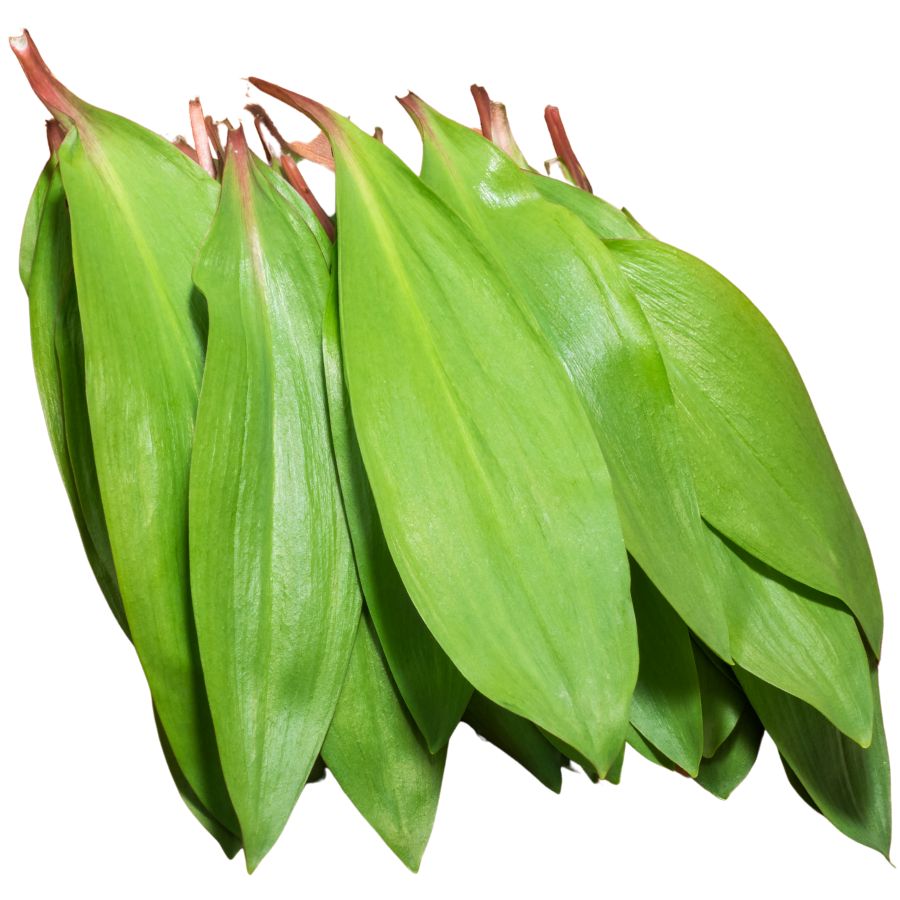
Known as wild leek, ramp, or ramson, this flavorful plant is famous for its broad green leaves and slender white stems. It grows low to the ground and gives off a strong onion-like scent when bruised, which can help you tell it apart from toxic lookalikes like lily of the valley.
If you give it a taste, you will notice a bold mix of onion and garlic flavors, with a tender texture that softens even more when cooked. People often sauté the leaves and stems, pickle the bulbs, or blend them into pestos and soups.
The entire plant can be used for cooking, but the leaves and bulbs are the most prized parts. It is important not to confuse it with similar-looking plants that do not have the signature onion smell when crushed.
Wild leek populations have declined in some areas because of overharvesting, so it is a good idea to only take a few from any given patch. When harvested thoughtfully, these vibrant greens can add a punch of flavor to just about anything you make.
Ostrich Fern (Matteuccia struthiopteris)
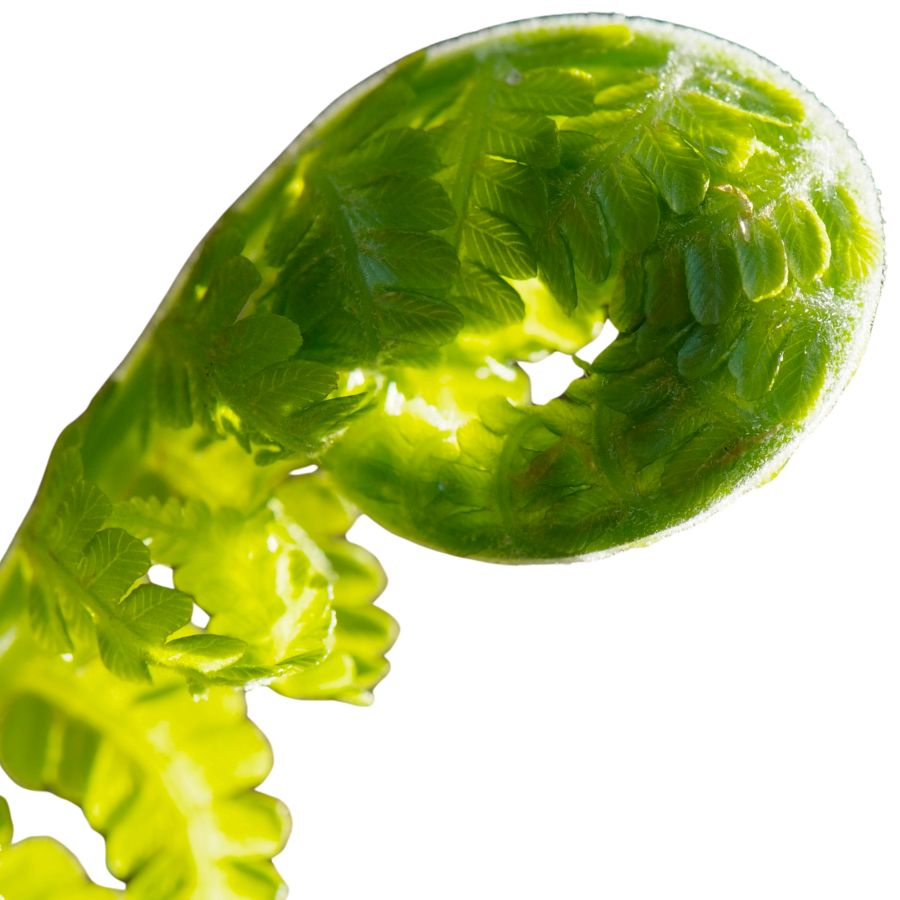
Tall and graceful, the Ostrich Fern unfurls its fiddleheads in early spring, resembling the curved neck of an ostrich. These tightly coiled shoots emerge from the ground in clusters, growing up to 6 feet tall when fully mature.
The fiddleheads are the only edible part, harvested when they’re 2-4 inches tall with brown papery scales. Look for the deep U-shaped groove on the inside of the stem – this key identification feature separates them from toxic look-alikes like Bracken fern.
Ostrich Fern fiddleheads taste similar to asparagus with a nutty flavor. They must be thoroughly cooked before eating, as raw consumption can cause stomach upset.
Wild food enthusiasts prize these ferns for their short harvesting window and distinct flavor. The fiddleheads can be sautéed, steamed, or pickled for later enjoyment.
Groundnut (Apios americana)

Groundnut is also called potato bean or Indian potato, and it grows as a climbing vine with clusters of pinkish-purple flowers. The part most people go for is the underground tuber, which looks a bit like a small, knobby chain of beads.
The flavor is richer than a regular potato, with a nutty, earthy taste and a dense, almost chestnut-like texture when cooked. It holds up well in soups and stews, or you can boil and mash it like a root vegetable.
Some people slice it thin and roast it until crisp, while others slow-cook it to bring out a sweeter taste. The vine also produces beans, but the root is what’s usually eaten.
There are a few vines that resemble groundnut, but many of those don’t have the same distinctive flower clusters or tend to lack the beadlike roots. Always make sure you’re digging up the right plant before cooking it.
Jerusalem Artichoke (Helianthus tuberosus)
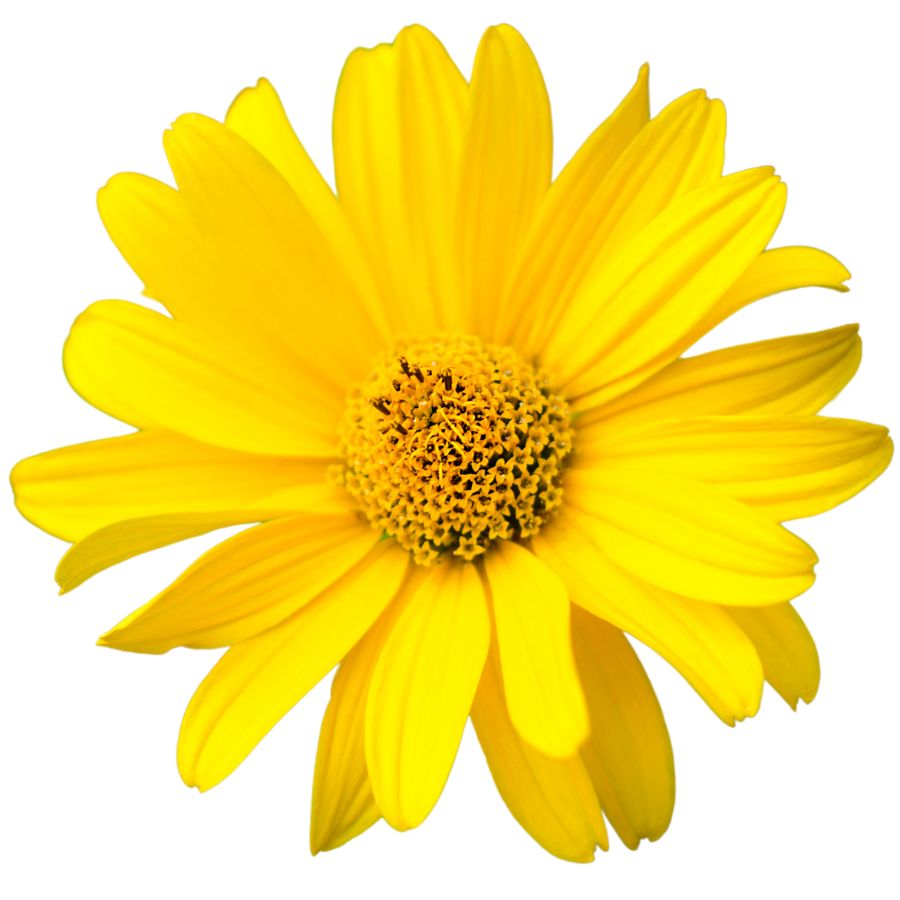
Jerusalem artichoke grows tall with sunflower-like blooms and has knobby underground tubers. The tubers are tan or reddish and look a bit like ginger root, though they belong to the sunflower family.
The part you’re after is the tuber, which has a nutty, slightly sweet flavor and a crisp texture when raw. You can roast, sauté, boil, or mash them like potatoes, and they hold their shape well in soups and stir-fries.
Some people experience gas or bloating after eating sunchokes due to the inulin they contain, so it’s a good idea to try a small amount first. Cooking them thoroughly can help reduce the chances of digestive discomfort.
Sunchokes don’t have many dangerous lookalikes, but it’s important not to confuse the plant with other sunflower relatives that don’t produce tubers. The above-ground part resembles a small sunflower, but it’s the knotted, underground tubers that are worth digging up.
Indian Cucumber Root (Medeola virginiana)
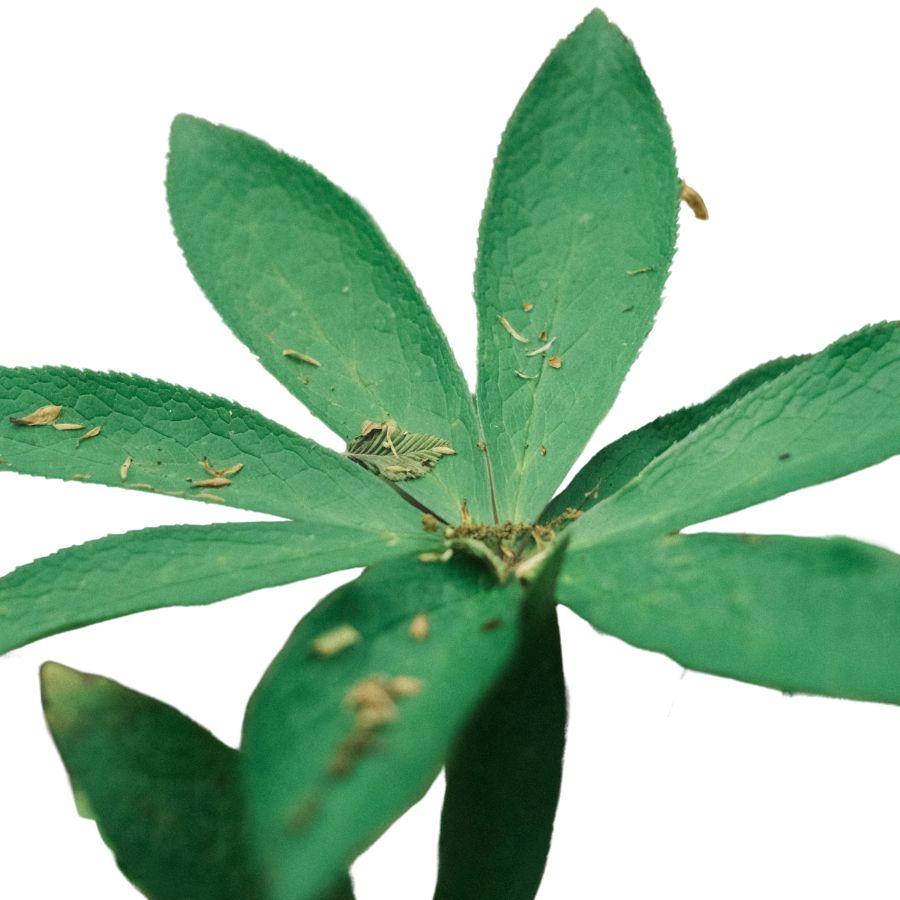
Indian Cucumber Root features two tiers of leaves with a small cluster of yellow-green flowers sprouting from the top. The plant grows 1-2 feet tall in rich woodland soils across eastern North America.
Its name comes from the crisp white rhizome that tastes remarkably like cucumber. The root is the only part safe to eat, offering a refreshing crunch and mild flavor that quenches thirst on summer hikes.
When harvesting, take care to leave plenty of plants untouched, as this woodland perennial grows slowly. Never collect more than one root from a patch of ten plants.
The root requires minimal preparation. Simply wash it thoroughly and enjoy raw as a trail snack. Native Americans valued this plant not only for food but also for medicinal uses, treating kidney ailments and gynecological issues.
Garlic Mustard (Alliaria petiolata)
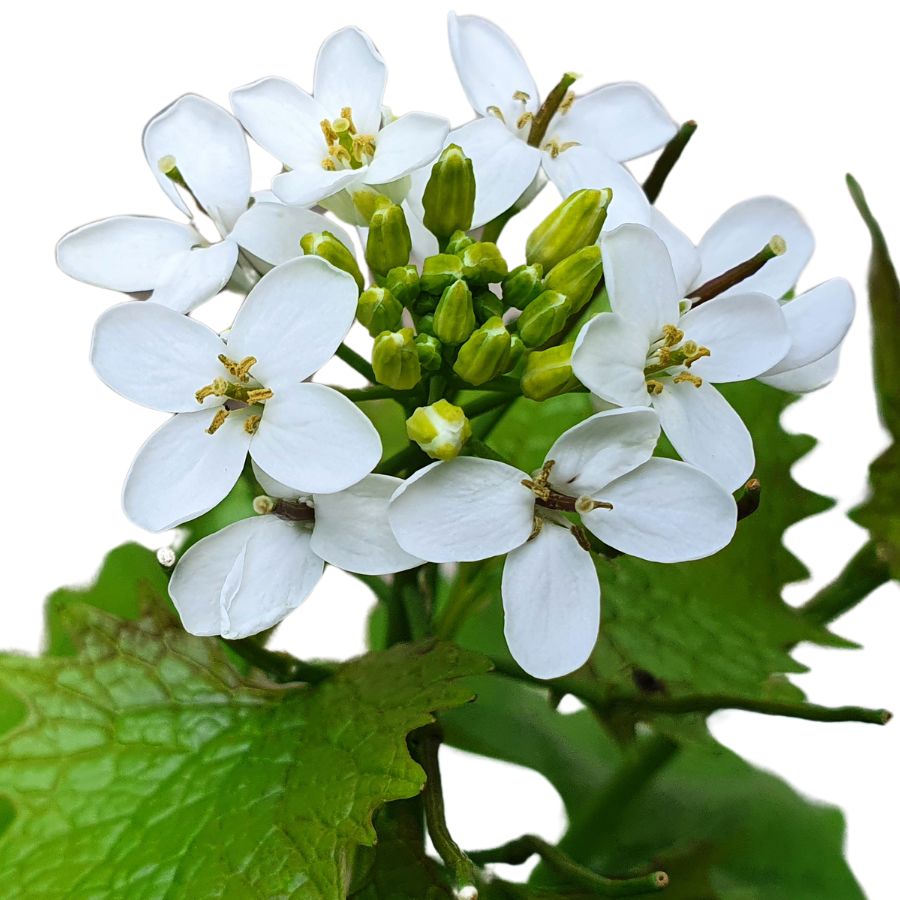
Garlic mustard, sometimes called poor man’s mustard or hedge garlic, has heart-shaped leaves with scalloped edges and small white four-petaled flowers. When you crush the leaves between your fingers, they release a strong garlic-like smell that makes it stand out from similar-looking plants.
The flavor of garlic mustard is sharp and garlicky at first bite, with a peppery bitterness that lingers. Its young leaves are often blended into pestos, stirred into soups, or tossed into salads to add a punch of flavor.
You can also use the roots, which have a taste similar to horseradish when fresh. The seed pods are sometimes collected and used as a spicy seasoning after being dried and crushed.
If you decide to gather some, make sure not to confuse it with plants like ground ivy or purple deadnettle, which do not have that garlic aroma. Stick to harvesting the leaves, flowers, seeds, and roots, and avoid anything with a fuzzy texture or a very different smell.
Red Clover (Trifolium pratense)
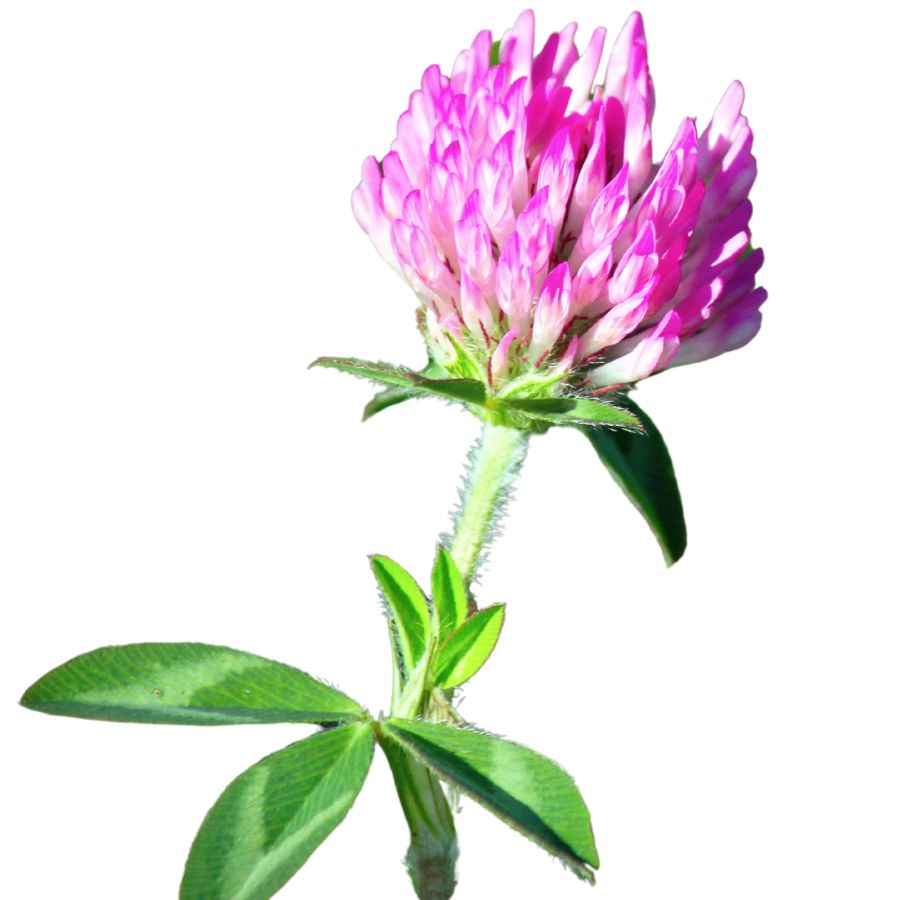
Red clover is also called wild clover or purple clover, and it grows in open areas with lots of sunlight. The round flower heads are a soft pinkish red, and the leaves have a pale crescent near the center.
The flower heads are the part most often gathered, and they can be eaten raw or dried for later use. Some people steep them in hot water for a mild, slightly sweet tea with a grassy flavor.
If you’re collecting flowers, make sure not to confuse them with crown vetch, which grows in similar spots but has more elongated, pea-like flowers. Crown vetch isn’t safe to eat, and it usually has a vine-like growth pattern that red clover doesn’t.
Red clover flowers can be tossed into salads or baked into muffins and breads for color and a hint of sweetness. The leaves are sometimes eaten too, but they tend to be tougher and more bitter.
Sweet Cicely (Osmorhiza claytonii)

Sweet Cicely belongs to the carrot family and produces delicate white flower clusters above fern-like foliage. The entire plant releases an anise or licorice scent when crushed, helping with positive identification.
Every part of Sweet Cicely is edible, from the aromatic leaves to the licorice-flavored roots and seeds. The roots can be eaten raw or cooked, while the young leaves make excellent additions to salads.
Foragers should exercise caution with any member of the carrot family, as it resembles toxic plants like Water Hemlock and Poison Hemlock. Always confirm the sweet anise smell before harvesting.
This versatile plant has traditionally served as both food and medicine. The roots have been used to treat digestive issues, while the sweet leaves were once used as a natural sweetener before sugar became widely available.
Common Milkweed (Asclepias syriaca)
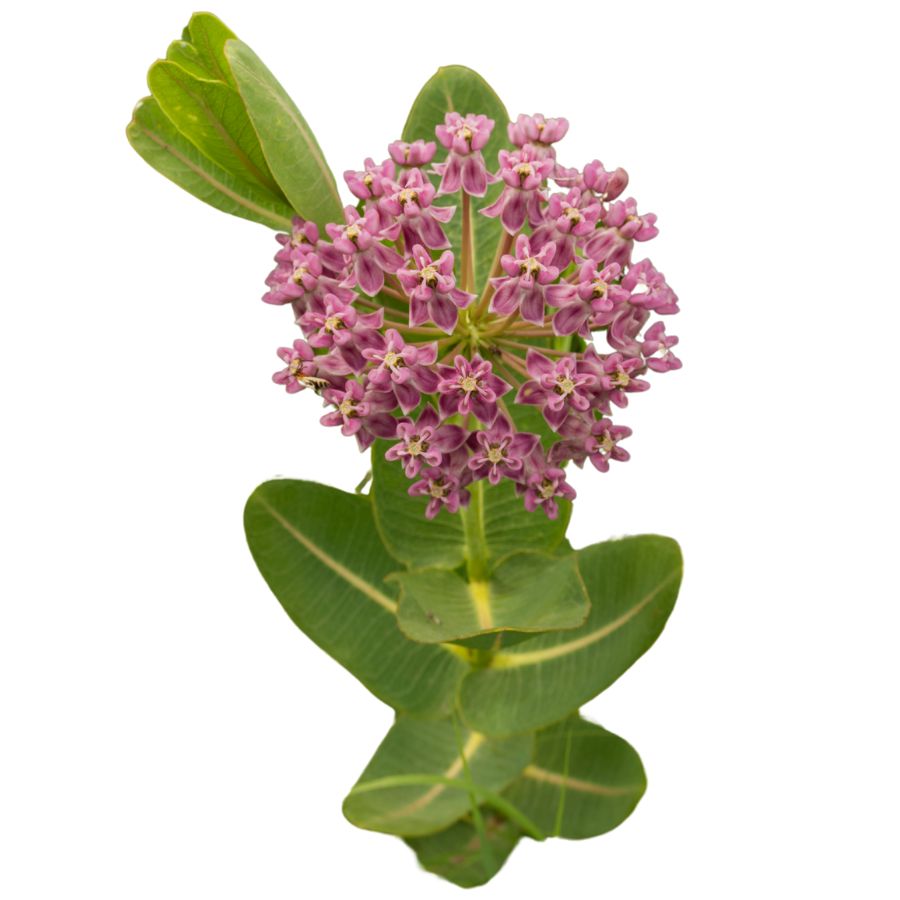
Known for its thick stems, broad leaves, and clusters of pinkish-purple flowers, common milkweed is sometimes called silkweed or butterfly flower. When you snap a stem or leaf, it releases a milky sap that helps you tell it apart from other plants that can be harmful.
If you want to try it in the kitchen, focus on gathering the young shoots, the tightly closed flower buds, and the small, immature pods. These parts have a mild, slightly sweet flavor when cooked, and their soft texture makes them a good addition to soups, sautés, and fritters.
Getting it ready to eat takes a little care, since boiling the plant parts in several changes of water helps remove bitterness and unwanted compounds. Some people also like to steam the buds or fry the pods lightly to bring out their best taste.
Although monarch caterpillars rely on this plant for survival, it has a long history of being used by people as well. Watch out for lookalikes like dogbane, though, since they share the same milky sap but are dangerously toxic if eaten.
Daylily (Hemerocallis fulva)
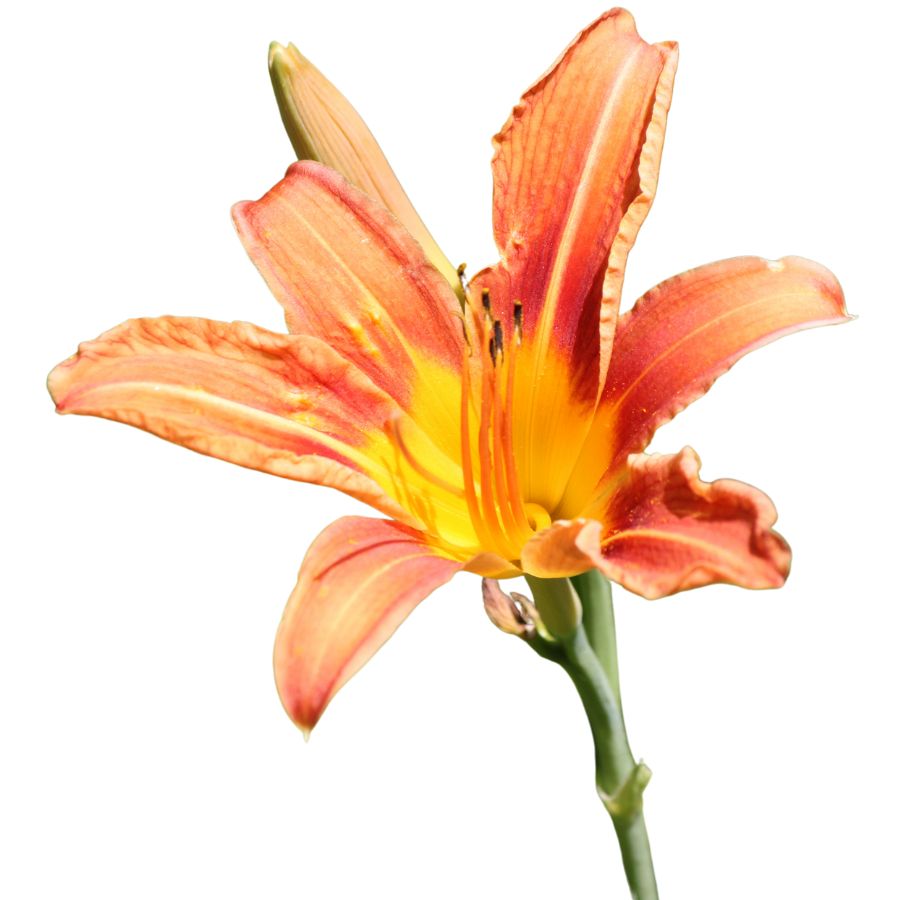
Bright orange flowers known as daylily, tiger lily, or ditch lily can sometimes be mistaken for other plants that are not safe to eat. True daylilies have long, blade-like leaves that grow in clumps at the base and a hollow flower stem, while their toxic lookalikes often have solid stems or different leaf patterns.
When it comes to flavor, daylily buds have a crisp texture and a mild taste that some people compare to green beans or asparagus. The flowers are tender and slightly sweet, which makes them popular for tossing into salads or lightly stir-frying.
Most people use the unopened flower buds in cooking, but the young shoots and tuber-like roots are also gathered for food. Always make sure you are harvesting from clean areas, because roadside plants can carry pollutants that are not safe to eat.
A few important cautions come with daylilies, since some people experience digestive upset after eating large amounts. Start by tasting a small quantity first to see how your body reacts before eating more.
Japanese Knotweed (Reynoutria japonica)
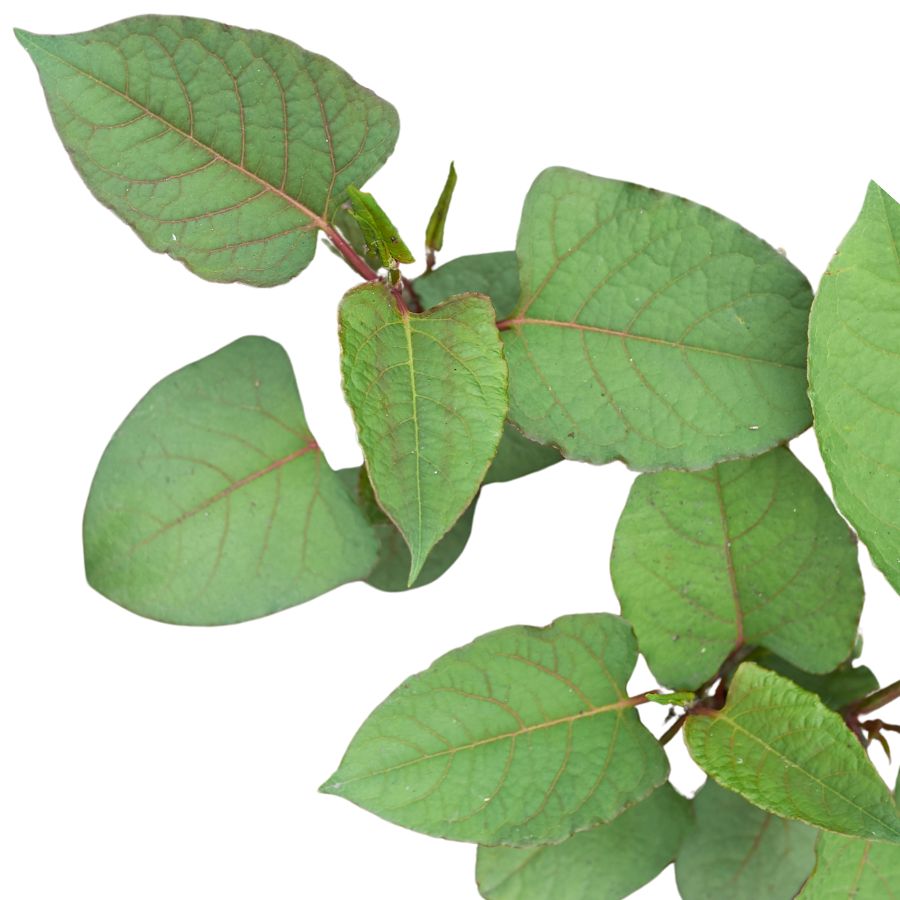
With its reddish-green stems and large spade-shaped leaves, Japanese knotweed—also called monkey weed—can be a surprisingly tasty wild ingredient. It has a strong, lemony flavor that mellows with cooking and pairs well with fruit.
People sometimes confuse it with giant ragweed or pokeweed, but knotweed stems are smooth, hollow, and ridged at the nodes, unlike the solid or grooved stems of those toxic lookalikes. Always focus on the young, flexible shoots, discarding any that feel stiff or woody.
Simmered into jams, blended into dressings, or used in baked goods, this plant transforms into something tart and refreshing. Peeled stalks can also be quick-pickled or sautéed.
You don’t want to eat the leaves or roots, and it’s smart to avoid areas sprayed with herbicides. Despite being considered a nuisance plant, it’s highly versatile in the kitchen.
Basswood (Tilia Americana)
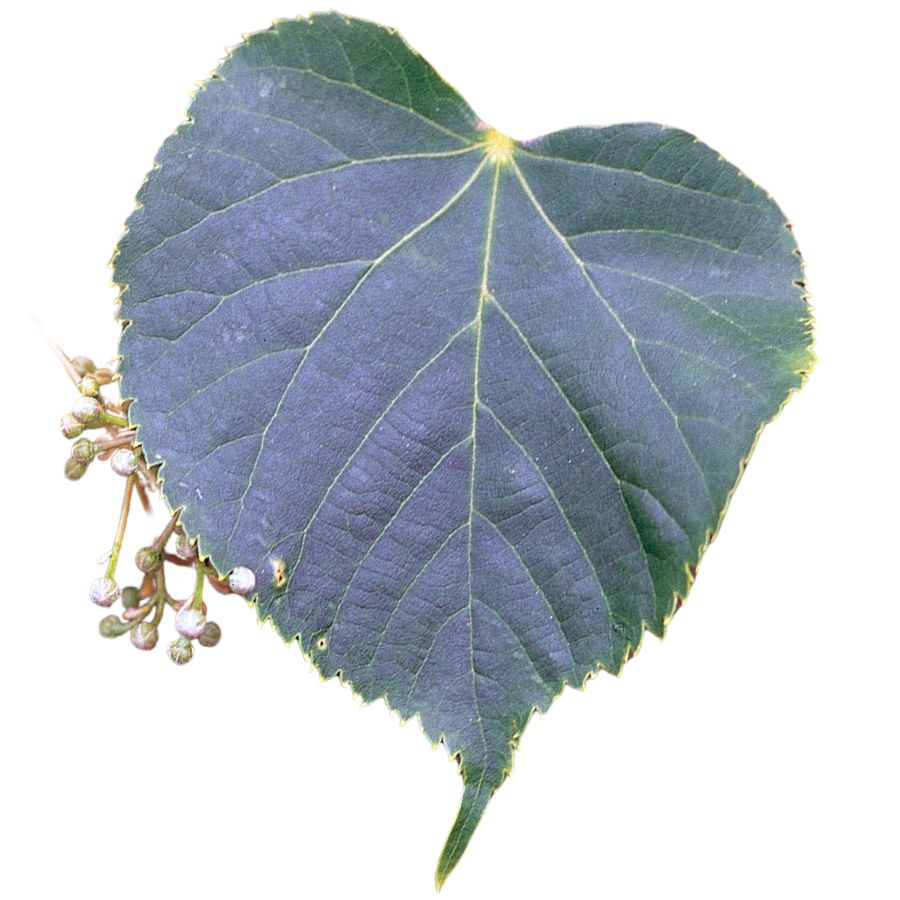
Basswood, also called bee tree or American linden, produces soft, pale green leaves that are edible when young and still slightly translucent. These leaves taste delicate and slightly mucilaginous, making them good raw in sandwiches or shredded into a salad.
The flowers can be brewed into a calming tea, but they also work as a fragrant garnish for cold desserts or infused honey. Some foragers even grind the seeds to make a coarse nut-flavored paste, though it spoils quickly.
Don’t confuse it with catalpa, which has larger leaves and long bean-like seed pods instead of rounded nutlets. Catalpa leaves are also thicker, odorless when crushed, and lack basswood’s small serrations.
Edible parts include the leaves, inner bark, flowers, and seeds, while the wood and mature bark should be avoided entirely. If you’re harvesting for a meal, stick with parts that snap cleanly and have a slight stickiness—that’s a good sign of freshness.
Sheep Sorrel (Rumex acetosella)
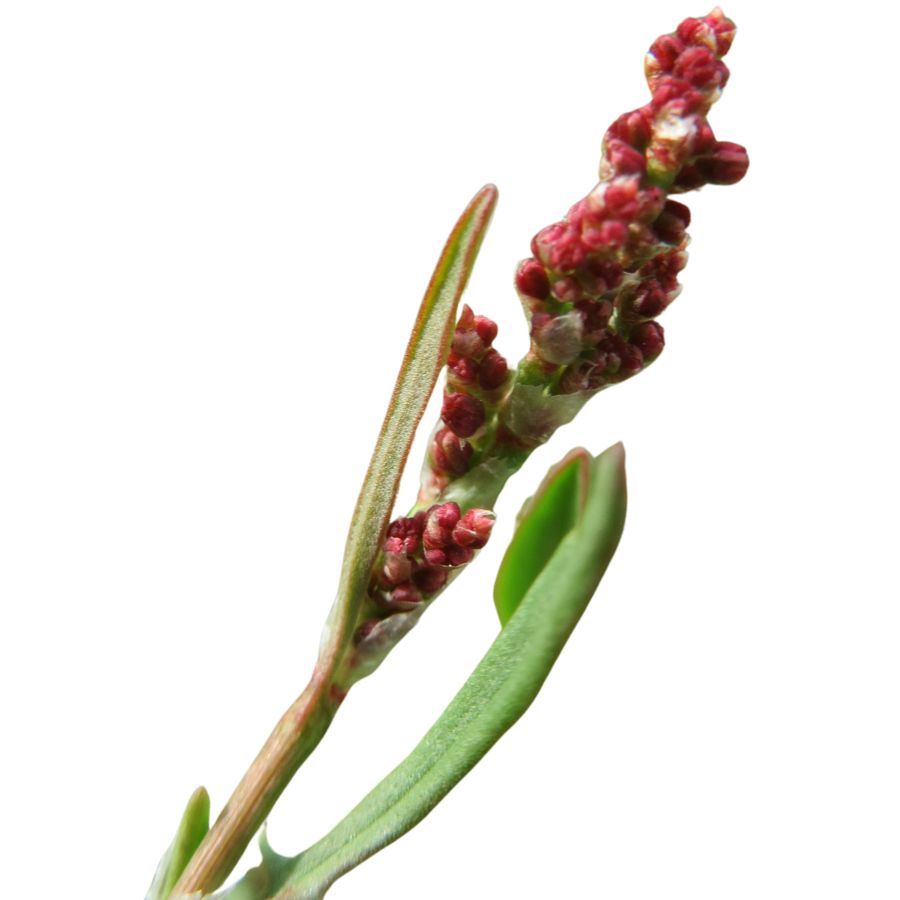
Sheep sorrel has narrow, arrow-shaped leaves with two small lobes at the base and a sharp, lemony flavor that hits immediately when you chew it. You can eat the leaves raw, toss them into soups, or blend them into sauces where their tang brightens up heavy dishes.
The leaves are soft and tender, and the stems are edible too, though they’re a bit more fibrous. Avoid confusing it with related docks like curly dock—those leaves are broader, tougher, and don’t have the same tart bite.
People mostly use sheep sorrel fresh, but it also dries well for tea or powdered seasoning. Its high oxalic acid content means you shouldn’t eat large amounts regularly, especially if you have kidney issues.
Red-tinted veins often run through the green leaves, especially in poor or acidic soils. The roots and flowers aren’t typically eaten, so stick with the leaves and young stems.
Stinging Nettle (Urtica dioica)

Stinging nettle is also known as burn weed or devil leaf, and it definitely earns those names. The tiny hairs on its leaves and stems can leave a painful, tingling rash if you brush against it raw, so always wear gloves when handling it.
Once it’s cooked or dried, those stingers lose their punch, and the leaves turn mild and slightly earthy in flavor. The texture softens too, making it a solid substitute for spinach in soups, pastas, or even as a simple sauté.
The young leaves and tender tops are what you want to collect. Avoid the tough lower stems and older leaves, which can be gritty or unpleasant to chew.
Some people confuse stinging nettle with purple deadnettle or henbit, but those don’t sting and have more rounded, fuzzy leaves. If the plant doesn’t make your skin react, it’s not stinging nettle.
Chickweed (Stellaria media)
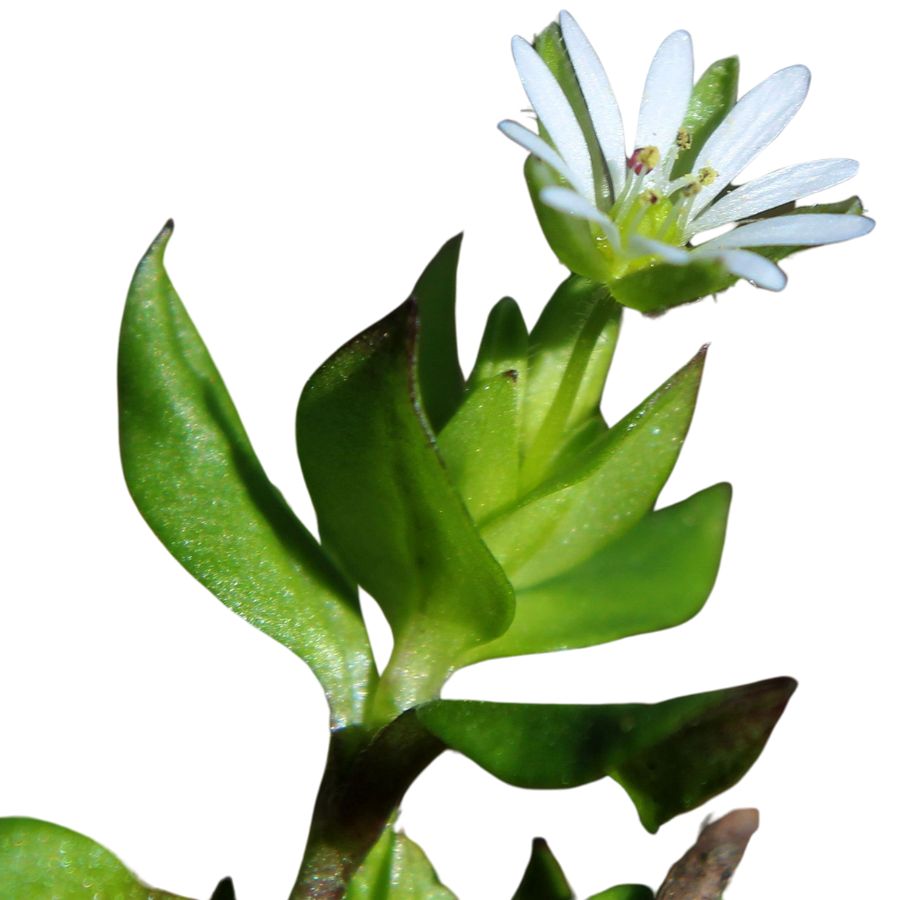
Chickweed, sometimes called satin flower or starweed, is a small, low-growing plant with delicate white star-shaped flowers and bright green leaves. The leaves are oval, pointed at the tip, and often grow in pairs along a slender, somewhat weak-looking stem.
When gathering chickweed, watch out for lookalikes like scarlet pimpernel, which has similar leaves but orange flowers instead of white. A key detail to check is the fine line of hairs that runs along one side of chickweed’s stem, a feature the dangerous lookalikes do not have.
The young leaves, tender stems, and flowers of chickweed are all edible, offering a mild, slightly grassy flavor with a crisp texture. You can toss it fresh into salads, blend it into pestos, or lightly wilt it into soups and stir-fries for a fresh green boost.
Aside from being a food plant, chickweed has been used traditionally in poultices and salves to help soothe skin irritations. Always make sure the plant is positively identified before eating, since mistaking it for a toxic lookalike could cause serious issues.
Wintergreen (Gaultheria procumbens)
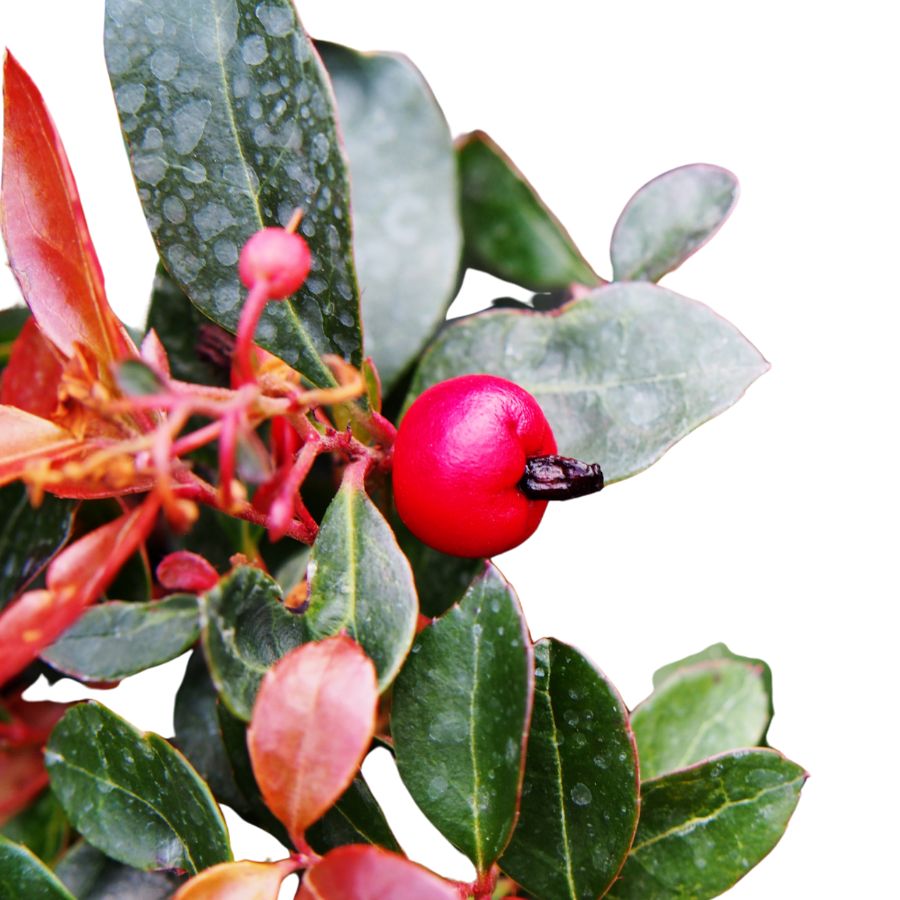
The glossy, leathery leaves of Wintergreen hug the forest floor, rarely growing taller than 6 inches. This evergreen groundcover produces bright red berries that persist through winter, offering a splash of color against snow.
Both the leaves and berries contain methyl salicylate, giving them their characteristic minty flavor and medicinal properties. Crushing a leaf releases the distinctive wintergreen scent, making identification straightforward.
Wintergreen berries can be eaten raw for a refreshing burst of flavor, though their strong taste means most people enjoy just a few at a time. The leaves make an excellent tea when steeped in hot water.
Native Americans used Wintergreen for pain relief long before modern medicine identified salicylates as the active ingredient in aspirin. Foragers should harvest sparingly, taking just a few leaves from each patch to ensure sustainable growth.
Thimbleberry (Rubus parviflorus)
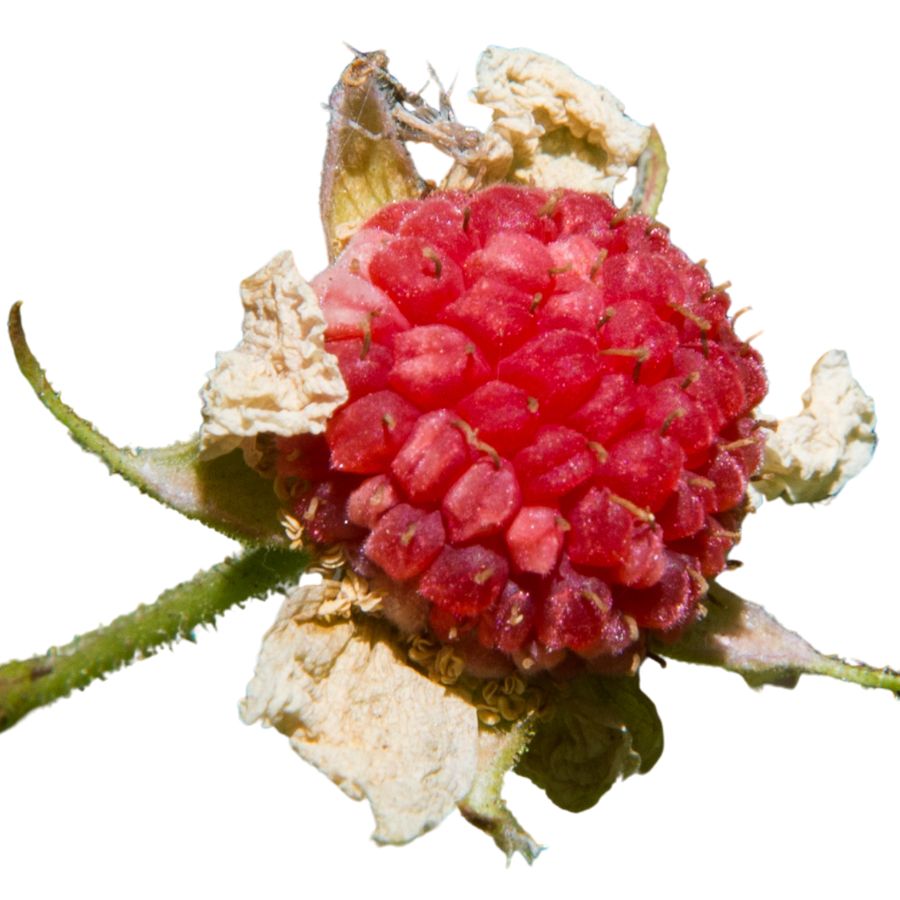
Thimbleberry is a native shrub that produces bright red, hollow berries with a seedy, melt-in-your-mouth texture. You can eat them raw, but they’re often used in jams and desserts because they fall apart easily.
The leaves are soft and wide with five deep lobes, unlike the more jagged or compound leaves of black raspberry or blackberry. Be cautious of misidentifying it with red raspberry, which has thorny stems and smaller, firmer fruit.
There’s no commercial thimbleberry farming because the fruit is too fragile to ship.
Thimbleberry has no thorns, which makes harvesting less painful compared to other berries in the same family. The plant’s white, five-petaled flowers are another clue you’ve found the right thing.
Don’t eat the leaves or stems; they aren’t toxic, but they’re not used for food.
Bee Balm (Monarda didyma)
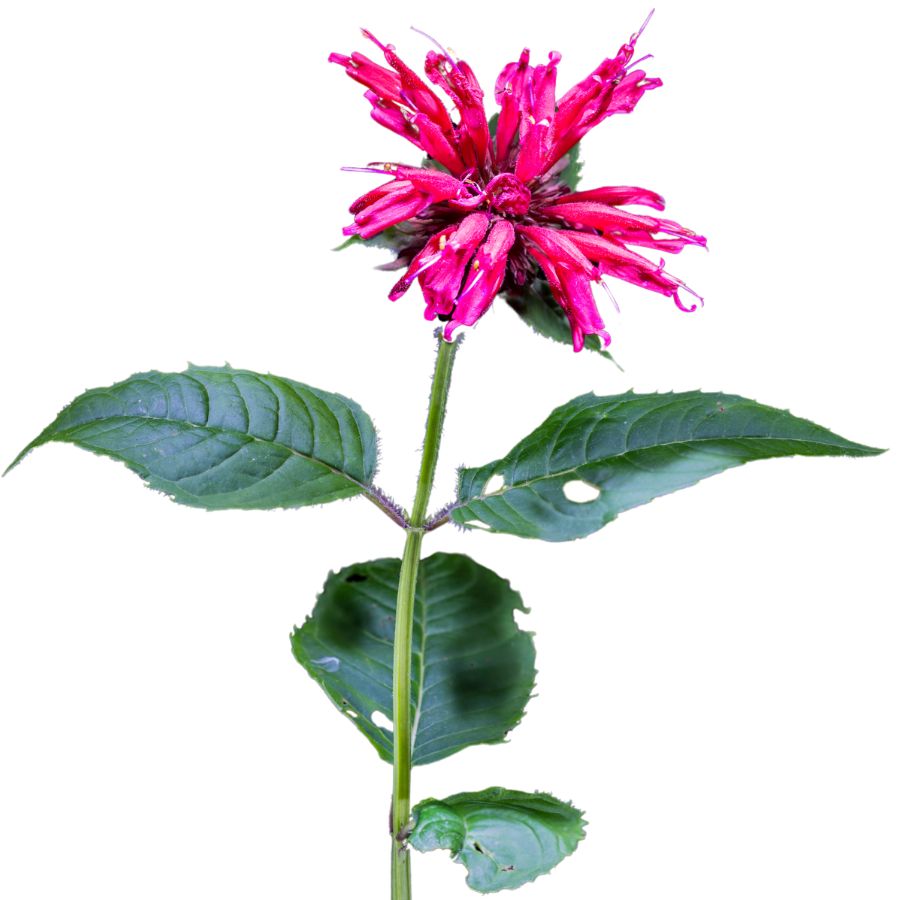
Also called bergamot, horsemint, or Oswego tea, bee balm is a bright plant with scarlet-red blooms that attract hummingbirds and bees alike. The leaves are what you would use for food, offering a spicy, minty scent that stands out when crushed between your fingers.
If you ever come across wild mints or even purple bergamot, keep in mind that while they are related, their flavors are different and some varieties can be harsher or more bitter. Bee balm leaves have a softer bite and a hint of oregano-like warmth, setting them apart from tougher wild mints.
The flowers and leaves both have a strong flavor that works well for brewing into teas or infusing into syrups. Some people also chop the leaves and sprinkle them into salads or use them as a seasoning, especially with meats or roasted vegetables.
Although bee balm is generally safe, using too much at once can cause slight stomach upset if you’re sensitive to strong plants. It is interesting to know that long ago, certain Native American groups made a tea from the leaves as a calming drink after meals.
Autumn Olive (Elaeagnus umbellata)
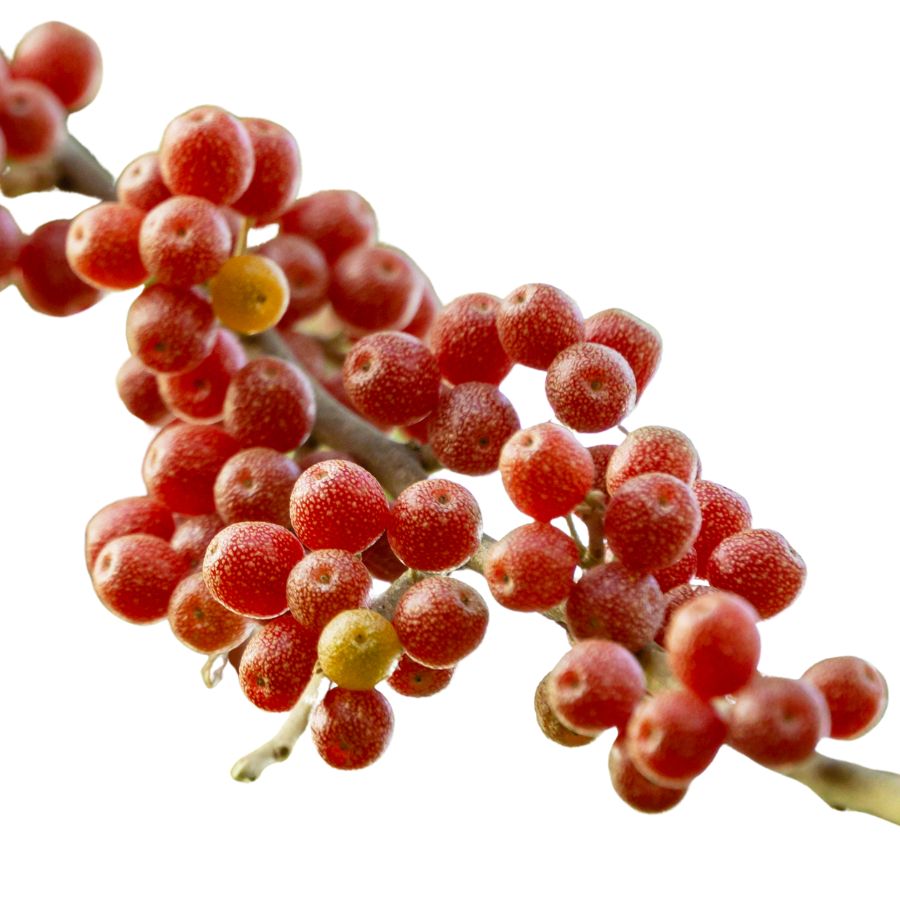
With its silver-dusted leaves and small, speckled red fruits, autumn olive—also called silverberry or Japanese silverberry—has made its way into many thickets and field edges. The fruit is edible, tart, and slick-skinned, with a burst of sourness that mellows in cooked preparations.
People often turn autumn olive into jelly, sauces, or fermented beverages to tame the intense flavor. You can also dehydrate the berries into a powder for use in baked goods.
Some confuse it with Russian olive, which grows similar leaves but bears dry, yellow fruit instead. Stick to harvesting just the berries, as the rest of the plant doesn’t have any culinary use.
What makes autumn olive particularly interesting is its nitrogen-fixing ability, which helps it thrive where other plants struggle—but that same trait is also why it spreads so aggressively. Still, the fruit is safe and edible, and one of the few wild berries with such a high lycopene content.
Sumac (Rhus typhina)
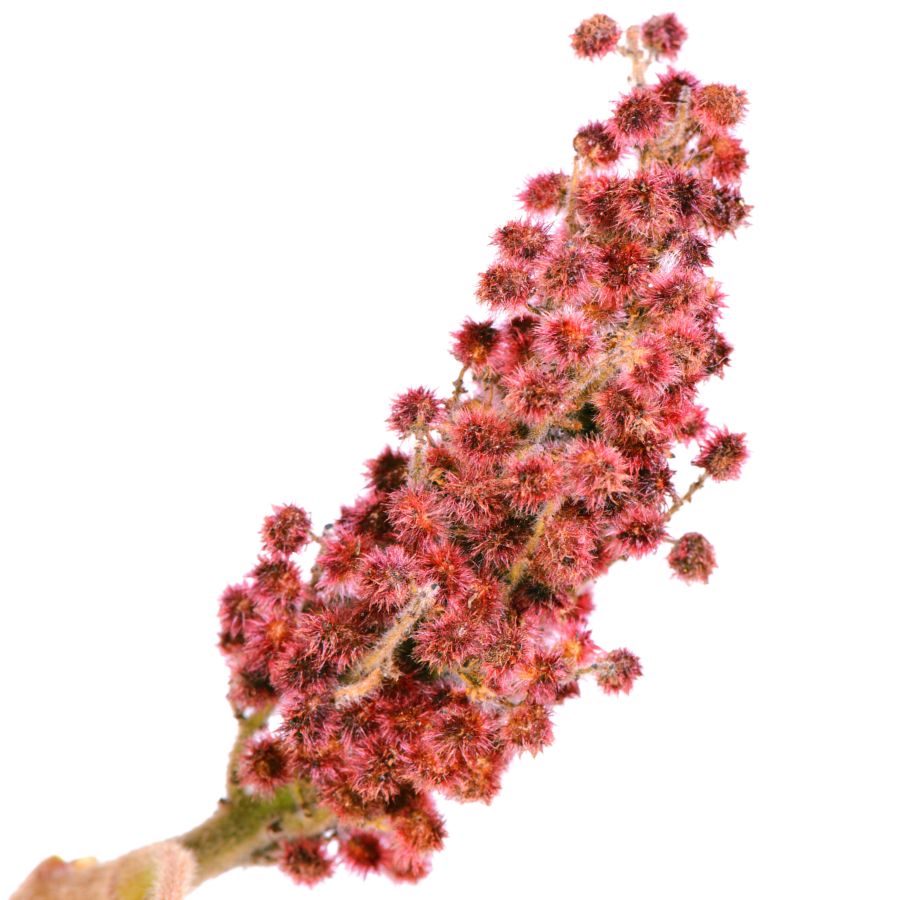
The edible part of staghorn sumac is the hairy, red fruit cluster that forms a cone shape at the tip of its branches. These clusters are packed with malic acid, giving them a tart flavor that’s perfect for making infused drinks.
Some people confuse it with poison sumac, but poison sumac has drooping white berries and lacks the fuzzy stems of staghorn sumac. That visual difference is critical when deciding what’s safe to forage.
After soaking the berry clusters in water, strain the result through a cloth or coffee filter to remove the irritating surface hairs. The liquid has a lemony bite that pairs well with honey or mint.
You can also dry the clusters and grind them into a reddish powder used like sumac spice in Middle Eastern dishes. Stick to the fruit only—none of the other parts are edible.
Toxic Plants That Look Like Edible Plants
There are plenty of wild edibles to choose from, but some toxic native plants closely resemble them. Mistaking the wrong one can lead to severe illness or even death, so it’s important to know exactly what you’re picking.
Poison Hemlock (Conium maculatum)
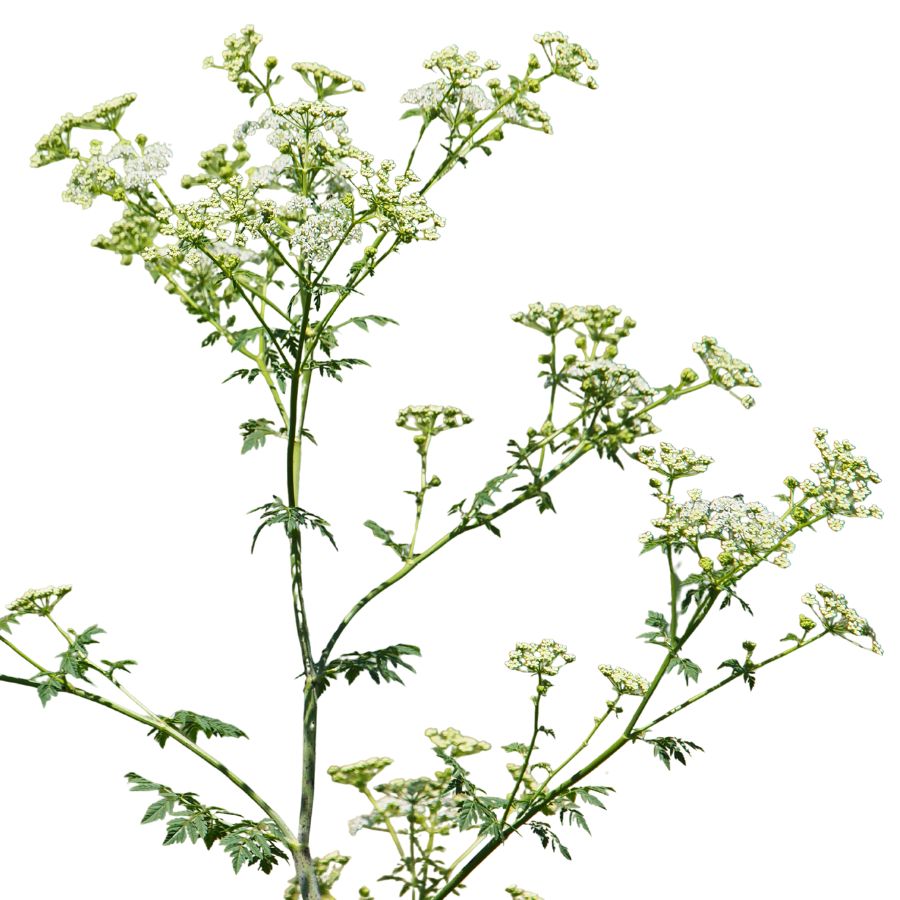
Often mistaken for: Wild carrot (Daucus carota)
Poison hemlock is a tall plant with lacy leaves and umbrella-like clusters of tiny white flowers. It has smooth, hollow stems with purple blotches and grows in sunny places like roadsides, meadows, and stream banks.
Unlike wild carrot, which has hairy stems and a dark central floret, poison hemlock has a musty odor and no flower center spot. It’s extremely toxic; just a small amount can be fatal, and even touching the sap can irritate the skin.
Water Hemlock (Cicuta spp.)
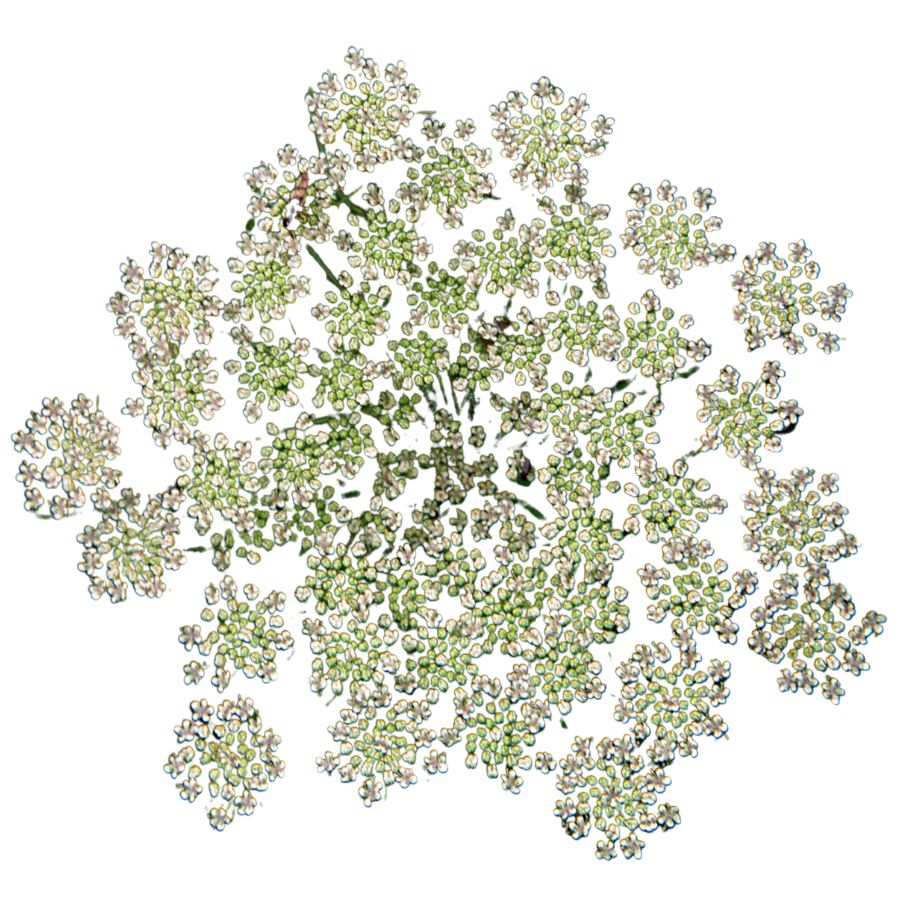
Often mistaken for: Wild parsnip (Pastinaca sativa) or wild celery (Apium spp.)
Water hemlock is a tall, branching plant with umbrella-shaped clusters of small white flowers. It grows in wet places like stream banks, marshes, and ditches, with stems that often show purple streaks or spots.
It can be confused with wild parsnip or wild celery, but its thick, hollow roots have internal chambers and release a yellow, foul-smelling sap when cut. Water hemlock is the most toxic plant in North America, and just a small amount can cause seizures, respiratory failure, and death.
False Hellebore (Veratrum viride)
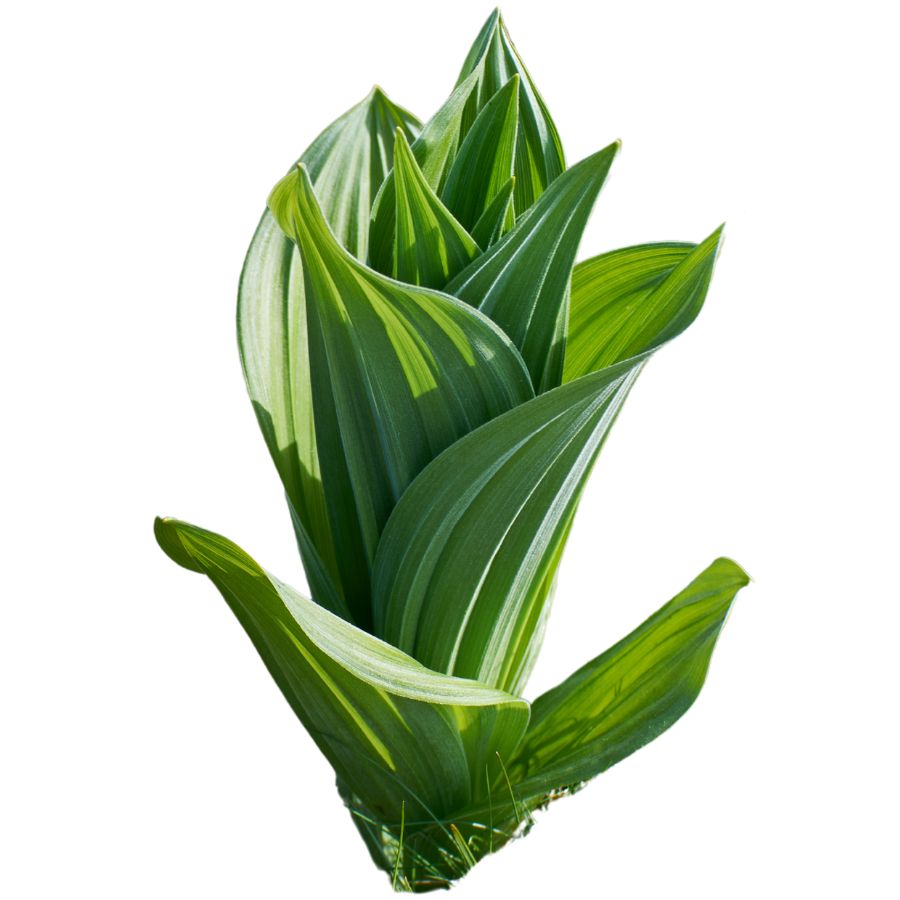
Often mistaken for: Ramps (Allium tricoccum)
False hellebore is a tall plant with broad, pleated green leaves that grow in a spiral from the base, often appearing early in spring. It grows in moist woods, meadows, and along streams.
It’s commonly mistaken for ramps, but ramps have a strong onion or garlic smell, while false hellebore is odorless and later grows a tall flower stalk. The plant is highly toxic, and eating any part can cause nausea, a slowed heart rate, and even death due to its alkaloids that affect the nervous and cardiovascular systems.
Death Camas (Zigadenus spp.)
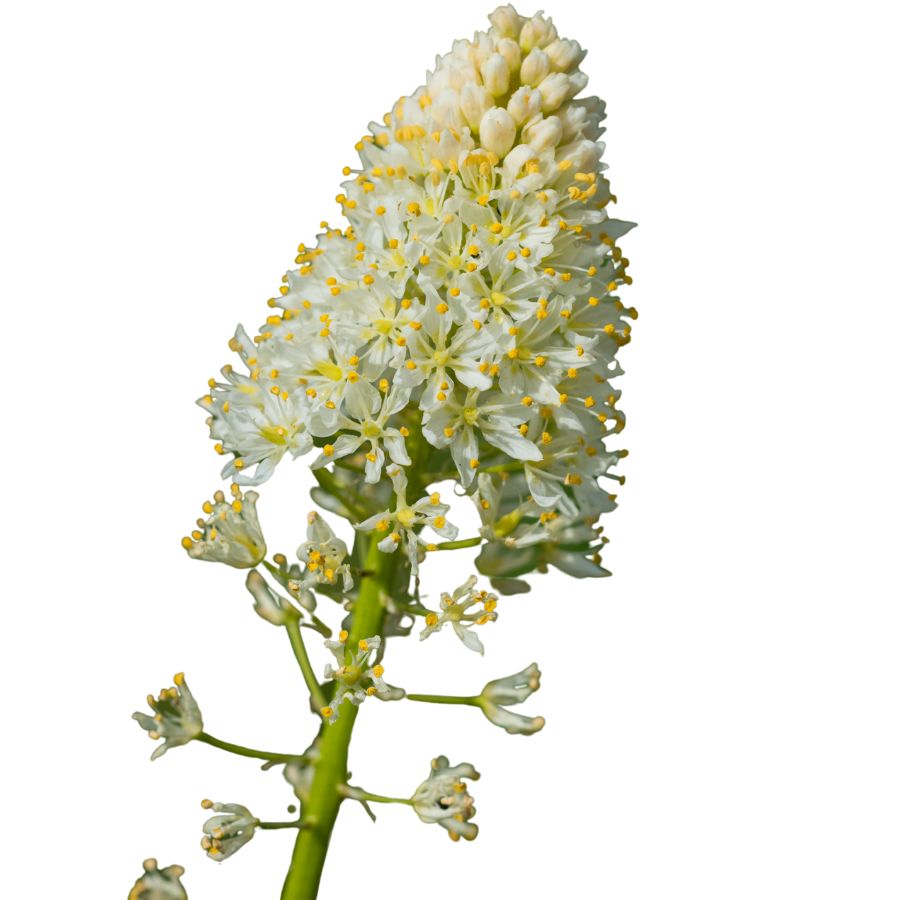
Often mistaken for: Wild onion or wild garlic (Allium spp.)
Death camas is a slender, grass-like plant that grows from underground bulbs and is found in open woods, meadows, and grassy hillsides. It has small, cream-colored flowers in loose clusters atop a tall stalk.
It’s often confused with wild onion or wild garlic due to their similar narrow leaves and habitats, but only Allium plants have a strong onion or garlic scent, while death camas has none. The plant is extremely poisonous, especially the bulbs, and even a small amount can cause nausea, vomiting, a slowed heartbeat, and potentially fatal respiratory failure.
Buckthorn Berries (Rhamnus spp.)
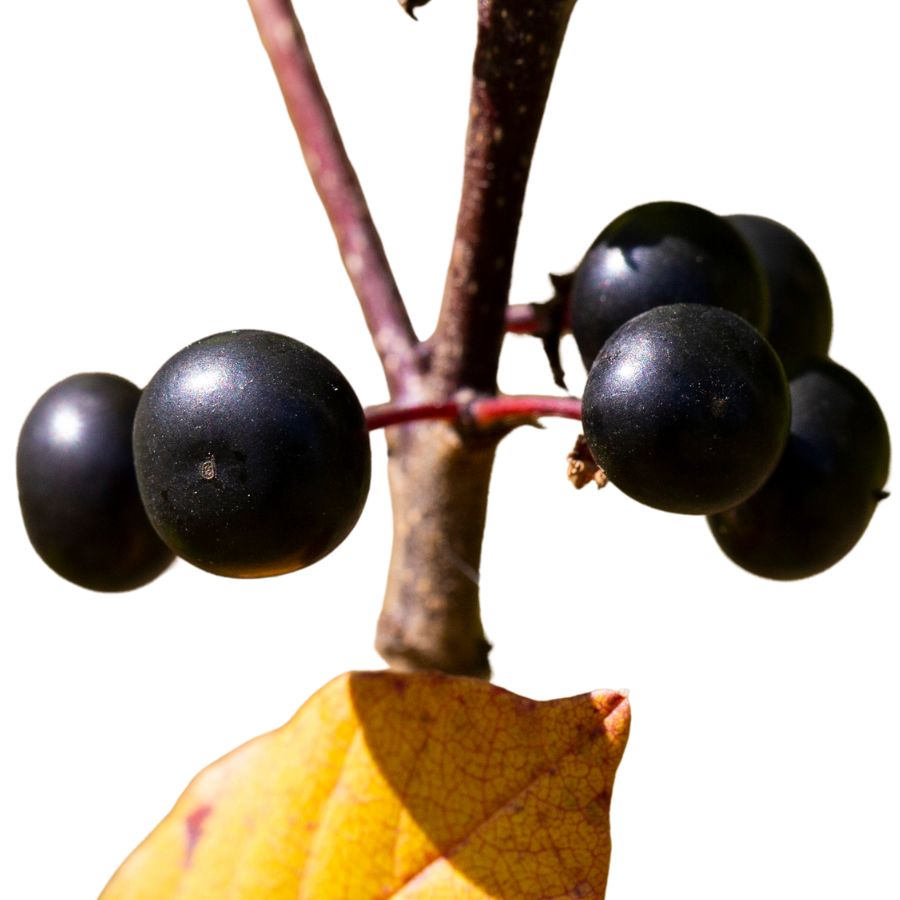
Often mistaken for: Elderberries (Sambucus spp.)
Buckthorn is a shrub or small tree often found along woodland edges, roadsides, and disturbed areas. It produces small, round berries that ripen to dark purple or black and usually grow in loose clusters.
These berries are sometimes mistaken for elderberries and other wild fruits, which also grow in dark clusters, but elderberries form flat-topped clusters on reddish stems while buckthorn berries are more scattered. Buckthorn berries are unsafe to eat as they contain compounds that can cause cramping, vomiting, and diarrhea, and large amounts may lead to dehydration and serious digestive problems.
Mayapple (Podophyllum peltatum)
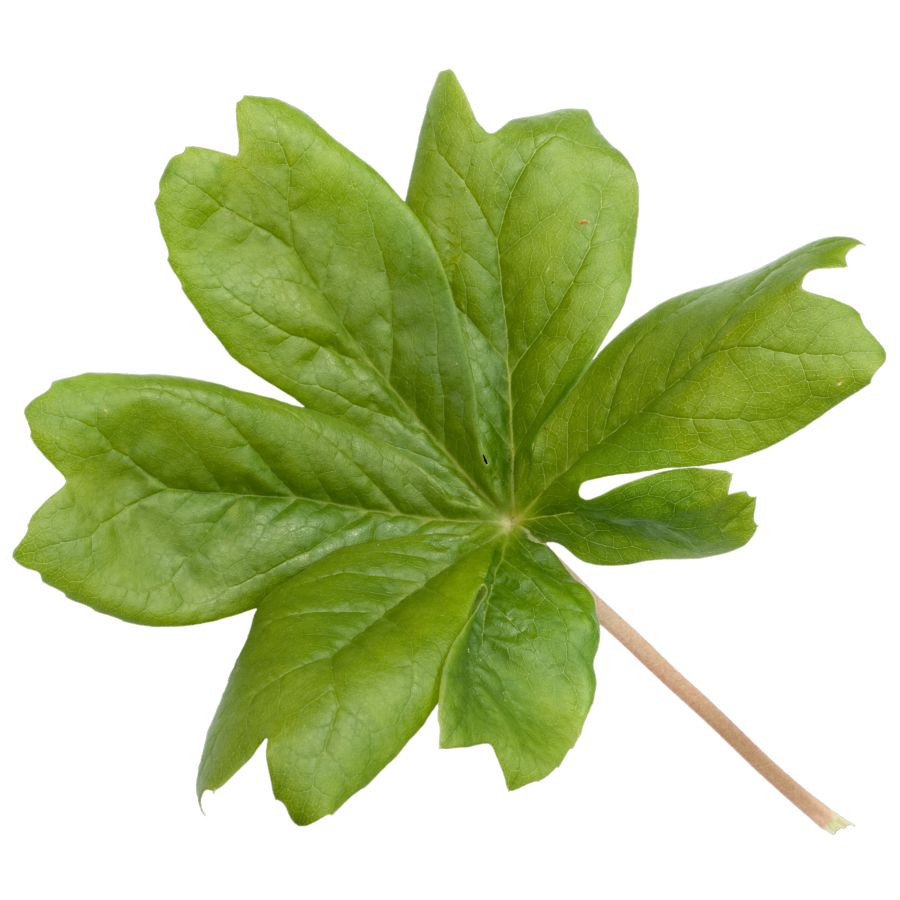
Often mistaken for: Wild grapes (Vitis spp.)
Mayapple is a low-growing plant found in shady forests and woodland clearings. It has large, umbrella-like leaves and produces a single pale fruit hidden beneath the foliage.
The unripe fruit resembles a small green grape, causing confusion with wild grapes, which grow in woody clusters on vines. All parts of the mayapple are toxic except the fully ripe, yellow fruit, which is only safe in small amounts. Eating unripe fruit or other parts can lead to nausea, vomiting, and severe dehydration.
Virginia Creeper (Parthenocissus quinquefolia)
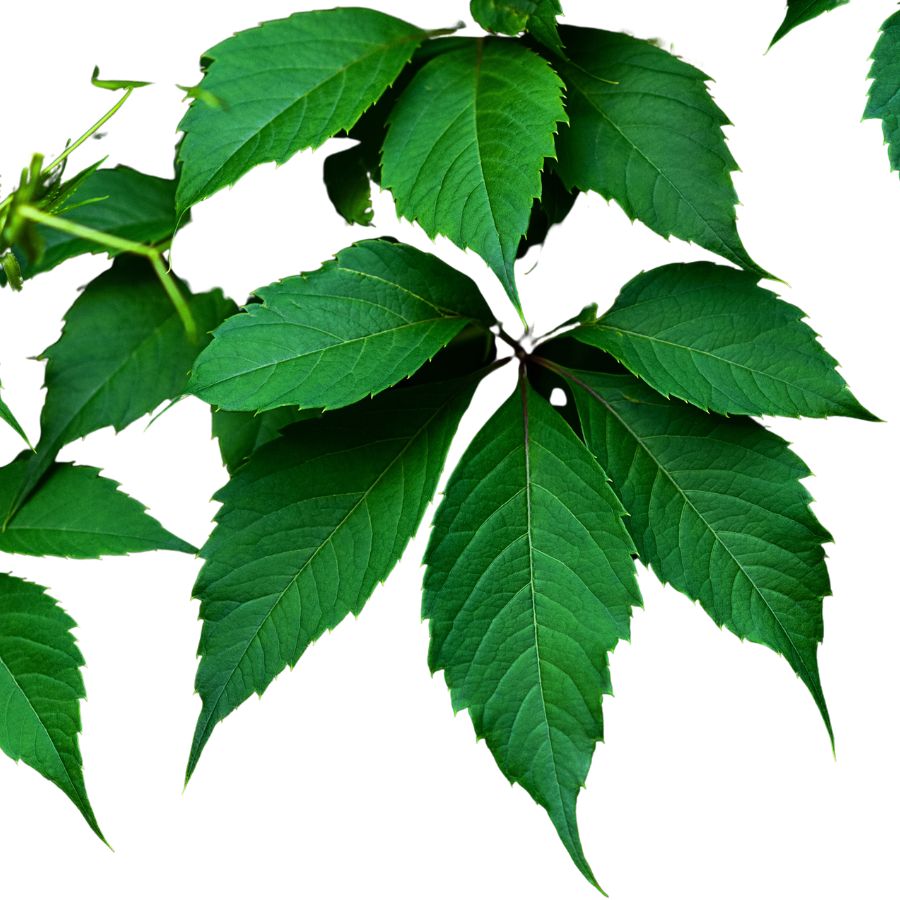
Often mistaken for: Wild grapes (Vitis spp.)
Virginia creeper is a fast-growing vine found on fences, trees, and forest edges. It has five leaflets per stem and produces small, bluish-purple berries from late summer to fall.
It’s often confused with wild grapes since both are climbing vines with similar berries, but grapevines have large, lobed single leaves and tighter fruit clusters. Virginia creeper’s berries are toxic to humans and contain oxalate crystals that can cause nausea, vomiting, and throat irritation.
Castor Bean (Ricinus communis)
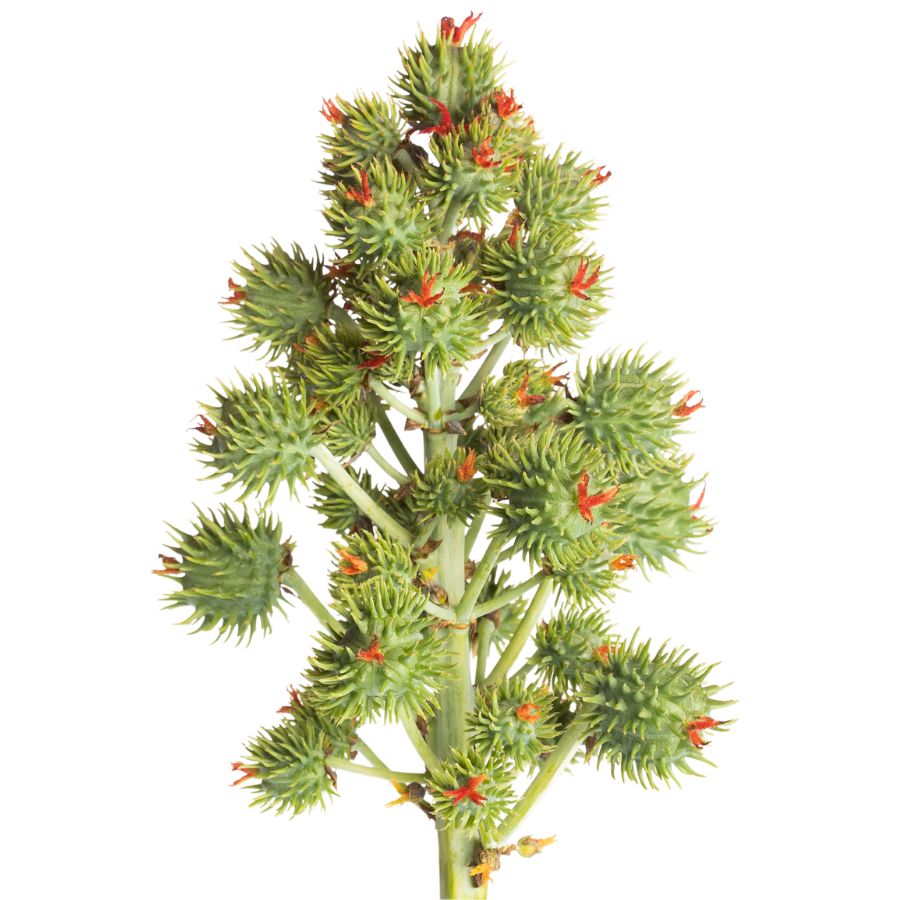
Often mistaken for: Wild rhubarb (Rumex spp. or Rheum spp.)
Castor bean is a bold plant with large, lobed leaves and tall red or green stalks, often found in gardens, along roadsides, and in disturbed areas in warmer regions in the US. Its red-tinged stems and overall size can resemble wild rhubarb to the untrained eye.
Unlike rhubarb, castor bean plants produce spiny seed pods containing glossy, mottled seeds that are extremely toxic. These seeds contain ricin, a deadly compound even in small amounts. While all parts of the plant are toxic, the seeds are especially dangerous and should never be handled or ingested.
A Quick Reminder
Before we get into the specifics about where and how to find these mushrooms, we want to be clear that before ingesting any wild mushroom, it should be identified with 100% certainty as edible by someone qualified and experienced in mushroom identification, such as a professional mycologist or an expert forager. Misidentification of mushrooms can lead to serious illness or death.
All mushrooms have the potential to cause severe adverse reactions in certain individuals, even death. If you are consuming mushrooms, it is crucial to cook them thoroughly and properly and only eat a small portion to test for personal tolerance. Some people may have allergies or sensitivities to specific mushrooms, even if they are considered safe for others.
The information provided in this article is for general informational and educational purposes only. Foraging for wild mushrooms involves inherent risks.
How to Get the Best Results Foraging
Safety should always come first when it comes to foraging. Whether you’re in a rural forest or a suburban greenbelt, knowing how to harvest wild foods properly is a key part of staying safe and respectful in the field.
Always Confirm Plant ID Before You Harvest Anything
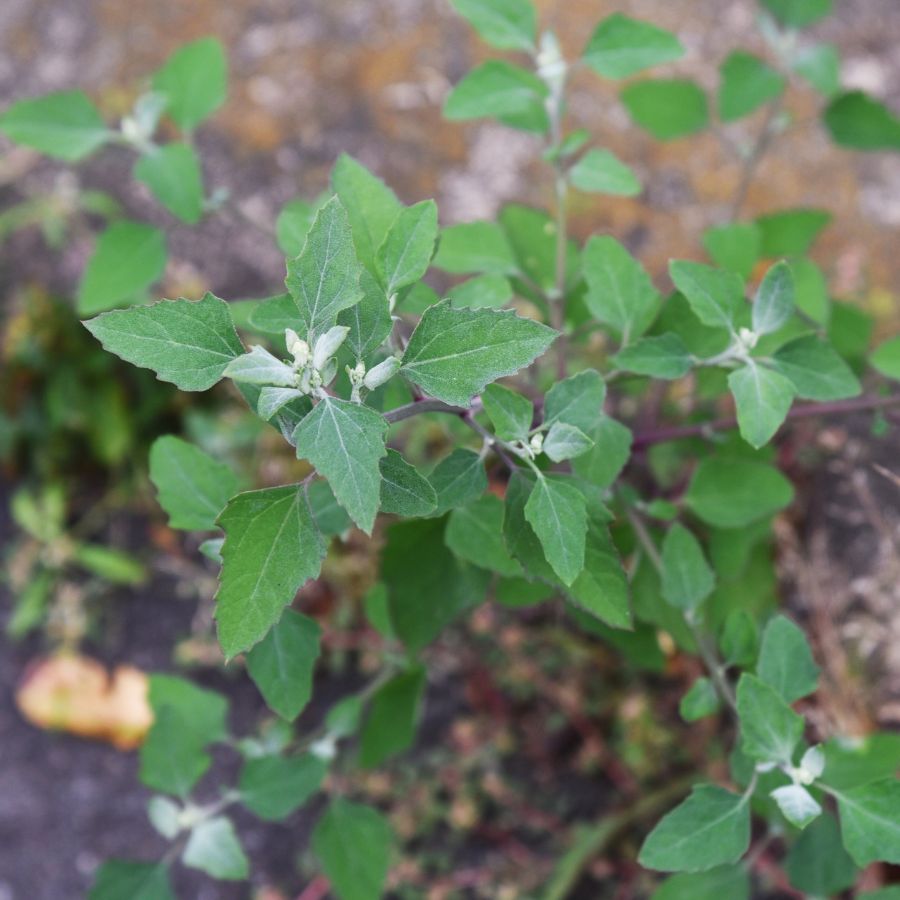
Knowing exactly what you’re picking is the most important part of safe foraging. Some edible plants have nearly identical toxic lookalikes, and a wrong guess can make you seriously sick.
Use more than one reliable source to confirm your ID, like field guides, apps, and trusted websites. Pay close attention to small details. Things like leaf shape, stem texture, and how the flowers or fruits are arranged all matter.
Not All Edible Plants Are Safe to Eat Whole
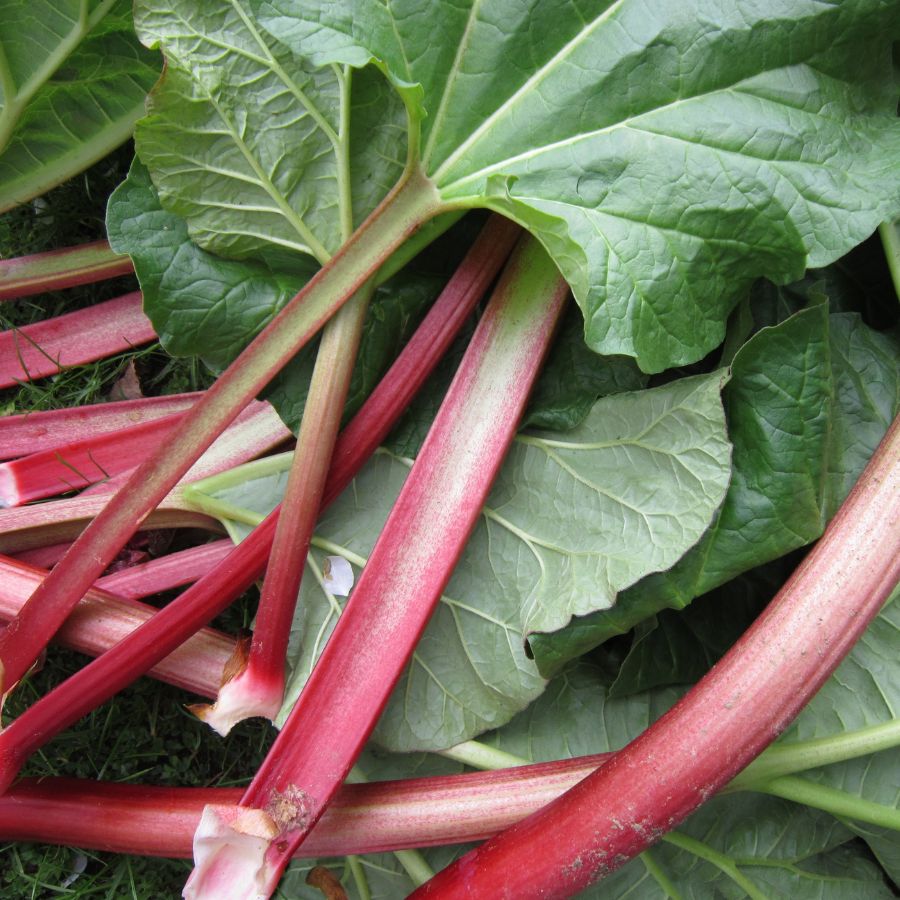
Just because a plant is edible doesn’t mean every part of it is safe. Some plants have leaves, stems, or seeds that can be toxic if eaten raw or prepared the wrong way.
For example, pokeweed is only safe when young and properly cooked, while elderberries need to be heated before eating. Rhubarb stems are fine, but the leaves are poisonous. Always look up which parts are edible and how they should be handled.
Avoid Foraging in Polluted or Contaminated Areas
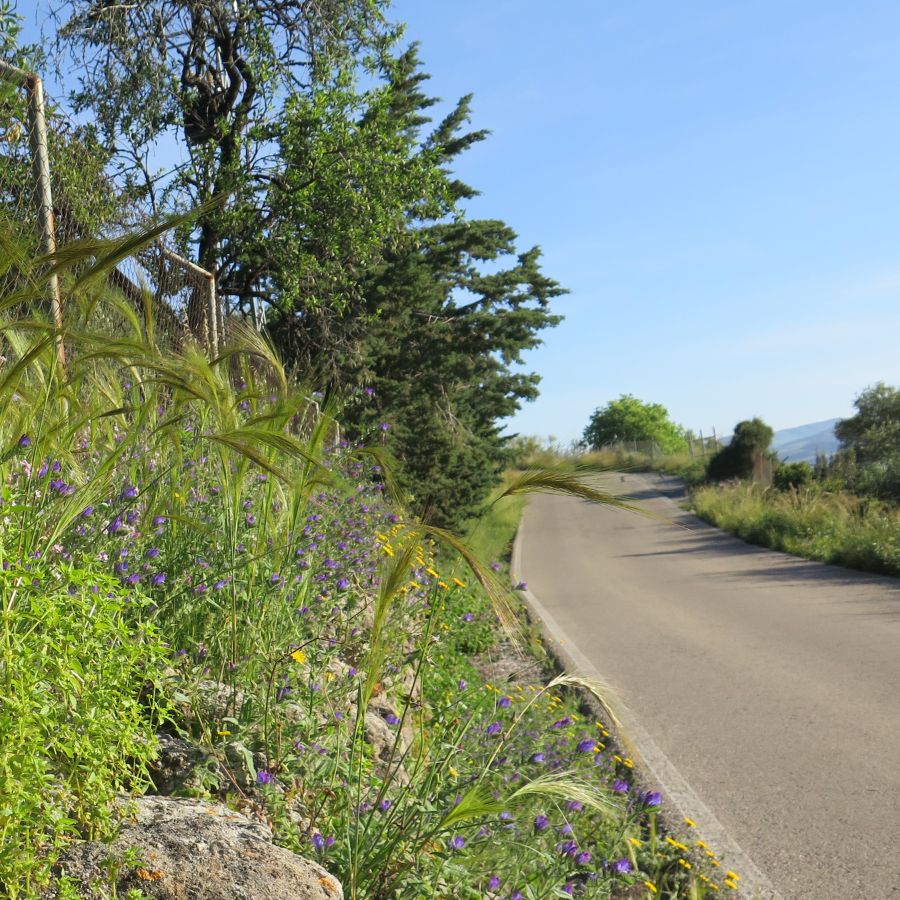
Where you forage matters just as much as what you pick. Plants growing near roads, buildings, or farmland might be coated in chemicals or growing in polluted soil.
Even safe plants can take in harmful substances from the air, water, or ground. Stick to clean, natural areas like forests, local parks that allow foraging, or your own yard when possible.
Don’t Harvest More Than What You Need
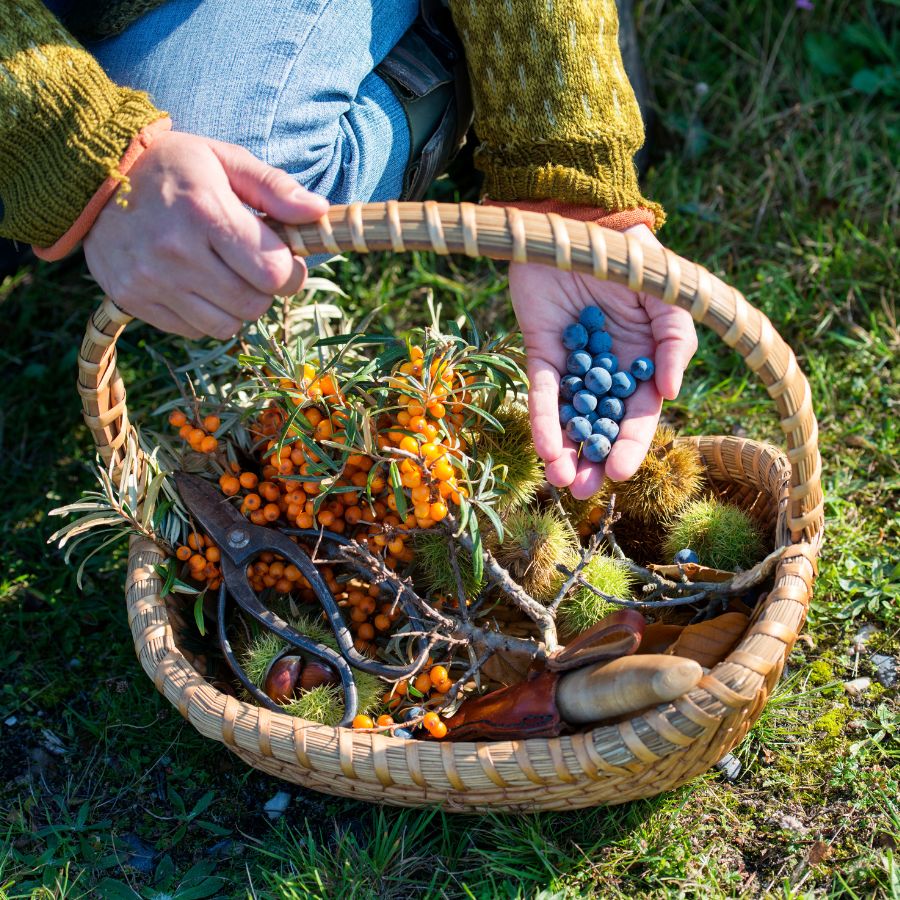
When you forage, take only what you plan to use. Overharvesting can hurt local plant populations and reduce future growth in that area.
Leaving plenty behind helps plants reproduce and supports wildlife that depends on them. It also ensures other foragers have a chance to enjoy the same resources.
Protect Yourself and Your Finds with Proper Foraging Gear
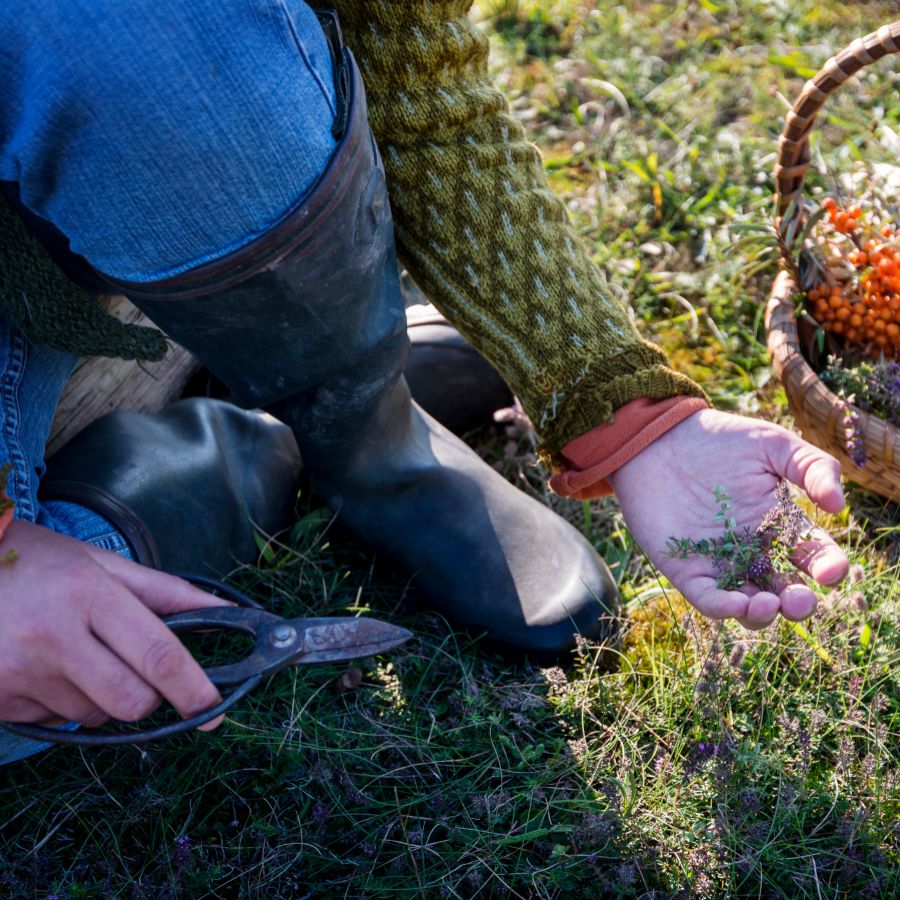
Having the right tools makes foraging easier and safer. Gloves protect your hands from irritants like stinging nettle, and a good knife or scissors lets you harvest cleanly without damaging the plant.
Use a basket or breathable bag to carry what you collect. Plastic bags hold too much moisture and can cause your greens to spoil before you get home.
This forager’s toolkit covers the essentials for any level of experience.
Watch for Allergic Reactions When Trying New Wild Foods

Even if a wild plant is safe to eat, your body might react to it in unexpected ways. It’s best to try a small amount first and wait to see how you feel.
Be extra careful with kids or anyone who has allergies. A plant that’s harmless for one person could cause a reaction in someone else.
Check Local Rules Before Foraging on Any Land
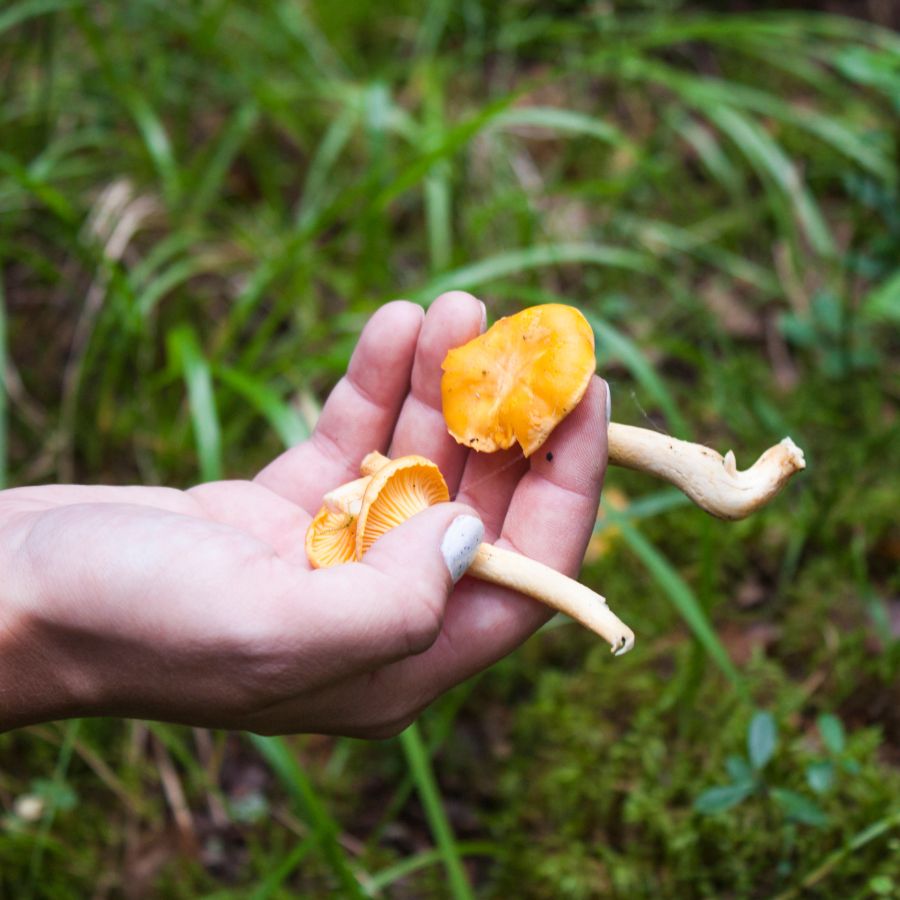
Before you start foraging, make sure you know the rules for the area you’re in. What’s allowed in one spot might be completely off-limits just a few miles away.
Some public lands permit limited foraging, while others, like national parks, usually don’t allow it at all. If you’re on private property, always get permission first.
Before you head out
Before embarking on any foraging activities, it is essential to understand and follow local laws and guidelines. Always confirm that you have permission to access any land and obtain permission from landowners if you are foraging on private property. Trespassing or foraging without permission is illegal and disrespectful.
For public lands, familiarize yourself with the foraging regulations, as some areas may restrict or prohibit the collection of mushrooms or other wild foods. These regulations and laws are frequently changing so always verify them before heading out to hunt. What we have listed below may be out of date and inaccurate as a result.
Where to Find Forageables in the State
There is a range of foraging spots where edible plants grow naturally and often in abundance:
| Plant | Locations |
|---|---|
| Ostrich Fern (Matteuccia struthiopteris) | – Killington area woods – Marsh-Billings-Rockefeller National Historical Park – Groton State Forest |
| Wild Leek (Allium tricoccum) | – Willoughby State Forest – Coolidge State Forest – Quechee State Park |
| Common Dandelion (Taraxacum officinale) | – Peacham Bog Natural Area – Underhill State Park – Mt. Philo State Park |
| Stinging Nettle (Urtica dioica) | – Chittenden Reservoir – Moose Bog Boardwalk – Branbury State Park |
| Chickweed (Stellaria media) | – Lowell Lake State Park – Pine Hill Park in Rutland – Jay State Forest |
| Wood Sorrel (Oxalis spp.) | – Putney Mountain – Baker Pond area – Gifford Woods State Park |
| Lamb’s Quarters (Chenopodium album) | – Mt. Pisgah Trail – Camel’s Hump State Park – Silvio O. Conte Refuge |
| Burdock (Arctium minus) | – Little River State Park – Missisquoi National Wildlife Refuge – Dead Creek Wildlife Management Area |
| Yellow Dock (Rumex crispus) | – Smugglers’ Notch State Park – Dorset Peak Forest – Ascutney State Park |
| Curly Dock (Rumex obtusifolius) | – Hogback Mountain Conservation Area – Green Mountain National Forest – Ethan Allen Park, Burlington |
| Common Plantain (Plantago major) | – Aitken State Forest – Lake Carmi State Park – Hubbard Park in Montpelier |
| Narrowleaf Plantain (Plantago lanceolata) | – Sand Bar State Park – Birdseye Mountain area – Baker Pond area |
| Garlic Mustard (Alliaria petiolata) | – Okemo State Forest – Lake St. Catherine State Park – Grand Isle State Park |
| Sheep Sorrel (Rumex acetosella) | – Bomoseen State Park – North Branch Nature Center – Lye Brook Wilderness |
| Wild Strawberry (Fragaria virginiana) | – Mt. Mansfield area – Knight Island State Park – Hinesburg Town Forest |
| Red Clover (Trifolium pratense) | – Lake Carmi State Park – Baker Pond area – Pine Hill Park in Rutland |
| White Clover (Trifolium repens) | – Coolidge State Forest – Marsh-Billings-Rockefeller National Historical Park – Chittenden Reservoir |
| Common Milkweed (Asclepias syriaca) | – Groton State Forest – Camel’s Hump State Park – Green Mountain National Forest |
| Daylily (Hemerocallis fulva) | – Quechee State Park – Silvio O. Conte Refuge – Dead Creek Wildlife Management Area |
| Autumn Olive (Elaeagnus umbellata) | – Little River State Park – Okemo State Forest – Moose Bog Boardwalk |
| Black Raspberry (Rubus occidentalis) | – Putney Mountain – Underhill State Park – Lowell Lake State Park |
| Red Raspberry (Rubus idaeus) | – Willoughby State Forest – Mt. Philo State Park – Bomoseen State Park |
| Blackberry (Rubus allegheniensis) | – Lake St. Catherine State Park – Dorset Peak Forest – Pine Hill Park in Rutland |
| Wild Blueberry (Vaccinium angustifolium) | – Knight Island State Park – Mt. Pisgah Trail – North Branch Nature Center |
| Elderberry (Sambucus canadensis) | – Missisquoi National Wildlife Refuge – Peacham Bog Natural Area – Jay State Forest |
| Groundnut (Apios americana) | – Ethan Allen Park, Burlington – Lye Brook Wilderness – Putney Mountain |
| Jerusalem Artichoke (Helianthus tuberosus) | – Mt. Mansfield area – Birdseye Mountain area – Gifford Woods State Park |
| American Hazelnut (Corylus americana) | – Hogback Mountain Conservation Area – Grand Isle State Park – Sand Bar State Park |
| Bee Balm (Monarda didyma) | – Camel’s Hump State Park – Lake Carmi State Park – Marsh-Billings-Rockefeller National Historical Park |
| Sweet Cicely (Osmorhiza claytonii) | – Okemo State Forest – Coolidge State Forest – Missisquoi National Wildlife Refuge |
| Wintergreen (Gaultheria procumbens) | – Smugglers’ Notch State Park – Killington area woods – Baker Pond area |
| Partridgeberry (Mitchella repens) | – Groton State Forest – Ascutney State Park – Dorset Peak Forest |
| Wild Ginger (Asarum canadense) | – Silvio O. Conte Refuge – Peacham Bog Natural Area – Branbury State Park |
| Blue Vervain (Verbena hastata) | – Little River State Park – Pine Hill Park in Rutland – Chittenden Reservoir |
| Pine (Pinus spp.) | – Green Mountain National Forest – Baker Pond area – Mt. Philo State Park |
| Spruce (Picea spp.) | – Jay State Forest – Lake Carmi State Park – Groton State Forest |
| Sumac (Rhus typhina) | – Hubbard Park in Montpelier – Sand Bar State Park – Mt. Mansfield area |
| Maple Tree (Acer spp.) | – Gifford Woods State Park – North Branch Nature Center – Lye Brook Wilderness |
| Basswood (Tilia americana) | – Knight Island State Park – Jay State Forest – Missisquoi National Wildlife Refuge |
| Highbush Cranberry (Viburnum trilobum) | – Camel’s Hump State Park – Mt. Pisgah Trail – Hogback Mountain Conservation Area |
| Wild Grape (Vitis riparia) | – Putney Mountain – Ethan Allen Park, Burlington – Lake St. Catherine State Park |
| Indian Cucumber Root (Medeola virginiana) | – Coolidge State Forest – Gifford Woods State Park – Grand Isle State Park |
| Wild Sarsaparilla (Aralia nudicaulis) | – Silvio O. Conte Refuge – Killington area woods – Willoughby State Forest |
| Thimbleberry (Rubus parviflorus) | – Bomoseen State Park – Underhill State Park – Sand Bar State Park |
| Mayapple (Podophyllum peltatum) | – Pine Hill Park in Rutland – Okemo State Forest – Green Mountain National Forest |
| Japanese Knotweed (Reynoutria japonica) | – Groton State Forest – Peacham Bog Natural Area – Missisquoi National Wildlife Refuge |
| Yarrow (Achillea millefolium) | – Camel’s Hump State Park – Jay State Forest – Gifford Woods State Park |
Peak Foraging Seasons
Different edible plants grow at different times of year, depending on the season and weather. Timing your search makes all the difference.
Spring
Spring brings a fresh wave of wild edible plants as the ground thaws and new growth begins:
| Plant | Months | Best Weather Conditions |
|---|---|---|
| Wild leek (Allium tricoccum) | April–May | Moist, shady forest floors |
| Ostrich fern (Matteuccia struthiopteris) | April–May | Cool, damp woodland edges |
| Chickweed (Stellaria media) | March–May | Partly shaded, moist soil |
| Stinging nettle (Urtica dioica) | April–June | Sunny areas after rainfall |
| Dandelion (Taraxacum officinale) | March–May | Sunny meadows and roadsides |
| Garlic mustard (Alliaria petiolata) | April–June | Edges of trails, disturbed soil |
Summer
Summer is a peak season for foraging, with fruits, flowers, and greens growing in full force:
| Plant | Months | Best Weather Conditions |
|---|---|---|
| Red clover (Trifolium pratense) | June–August | Sunny meadows with light moisture |
| White clover (Trifolium repens) | June–August | Open grassy fields after rain |
| Black raspberry (Rubus occidentalis) | July–August | Sunny forest margins |
| Wild strawberry (Fragaria virginiana) | June–July | Open woodland clearings |
| Lamb’s quarters (Chenopodium album) | June–September | Disturbed soils, sunny spots |
| Common milkweed (Asclepias syriaca) | June–August | Dry sunny fields |
| Daylily (Hemerocallis fulva) | June–July | Sunny roadsides and fields |
| Bee balm (Monarda didyma) | July–August | Moist meadows and stream edges |
| Wild blueberry (Vaccinium angustifolium) | July–August | Rocky or acidic forest areas |
Fall
As temperatures drop, many edible plants shift underground or produce their last harvests:
| Plant | Months | Best Weather Conditions |
|---|---|---|
| Groundnut (Apios americana) | September–October | Wet riverbanks and forest edges |
| Jerusalem artichoke (Helianthus tuberosus) | September–November | Open fields and disturbed land |
| Burdock (Arctium minus) | September–November | Disturbed soil, partly shaded areas |
| Yellow dock (Rumex crispus) | September–October | Grassy meadows and disturbed ground |
| Blackberry (Rubus allegheniensis) | August–September | Sunny thickets and woodland edges |
| Sumac (Rhus typhina) | August–September | Dry, open places |
| Highbush cranberry (Viburnum trilobum) | September–October | Edges of wetlands and thickets |
Winter
Winter foraging is limited but still possible, with hardy plants and preserved growth holding on through the cold:
| Plant | Months | Best Weather Conditions |
|---|---|---|
| Wintergreen (Gaultheria procumbens) | December–February | Cool, evergreen forest floor |
| Partridgeberry (Mitchella repens) | December–February | Shaded mossy woodland |
| Pine (Pinus spp.) | December–February | Dry upland forests |
| Spruce (Picea spp.) | December–February | Cold coniferous woods |
| Maple tree (Acer spp.) – sap | February–March | Freezing nights and thawing days |
| Basswood (Tilia americana) – buds | January–March | Dormant season in moist forests |
One Final Disclaimer
The information provided in this article is for general informational and educational purposes only. Foraging for wild plants and mushrooms involves inherent risks. Some wild plants and mushrooms are toxic and can be easily mistaken for edible varieties.
Before ingesting anything, it should be identified with 100% certainty as edible by someone qualified and experienced in mushroom and plant identification, such as a professional mycologist or an expert forager. Misidentification can lead to serious illness or death.
All mushrooms and plants have the potential to cause severe adverse reactions in certain individuals, even death. If you are consuming foraged items, it is crucial to cook them thoroughly and properly and only eat a small portion to test for personal tolerance. Some people may have allergies or sensitivities to specific mushrooms and plants, even if they are considered safe for others.
Foraged items should always be fully cooked with proper instructions to ensure they are safe to eat. Many wild mushrooms and plants contain toxins and compounds that can be harmful if ingested.

